Tuscan living rooms embody the timeless charm of Italian countryside living, blending rustic elegance with warm hospitality. This style celebrates natural materials, earthy color palettes, and architectural elements that create spaces filled with character and history. From traditional farmhouse aesthetics featuring exposed wooden beams and stone fireplaces to contemporary interpretations with cleaner lines and neutral bases, Tuscan design offers endless possibilities for creating inviting, sophisticated living spaces that feel both luxurious and lived-in.
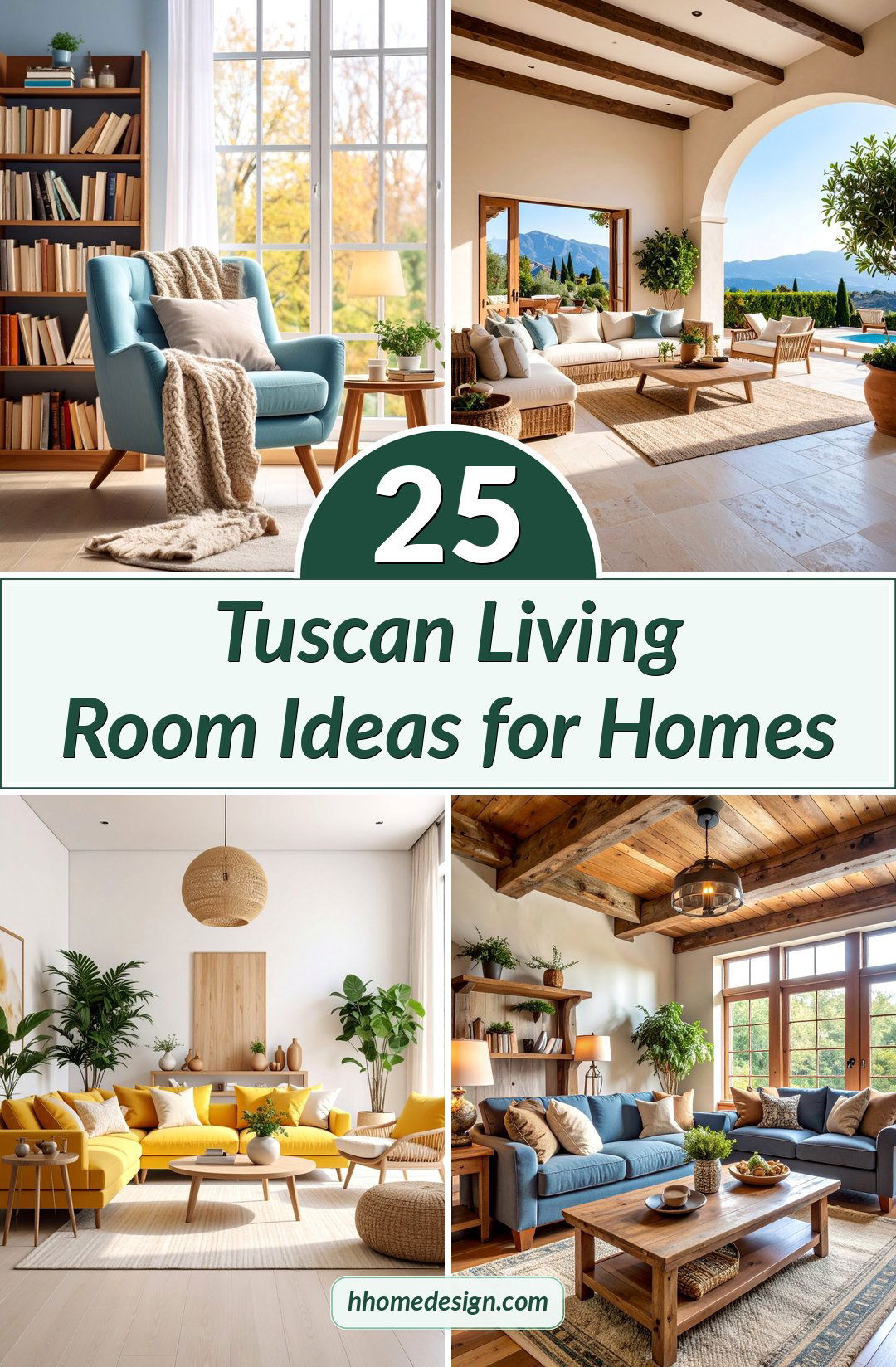
1. Rustic Tuscan Living Room with Exposed Ceiling Beams

Create an authentic countryside atmosphere with hand-hewn wooden ceiling beams stretching across vaulted ceilings. These aged oak or chestnut beams add immediate character and visual height to your space. Pair them with warm terracotta walls and natural stone flooring for maximum impact. Large leather sofas in rich brown tones complement the rustic wood elements, while wrought iron accents in lighting fixtures and side tables reinforce the old-world charm. Natural textures through woven baskets, pottery, and rough-hewn wooden furniture complete this traditional aesthetic. This design approach celebrates the authentic craftsmanship of Italian farmhouses, creating a space that feels grounded in history while remaining thoroughly comfortable for modern living.
2. Stone Fireplace Tuscan Living Room with Natural Materials
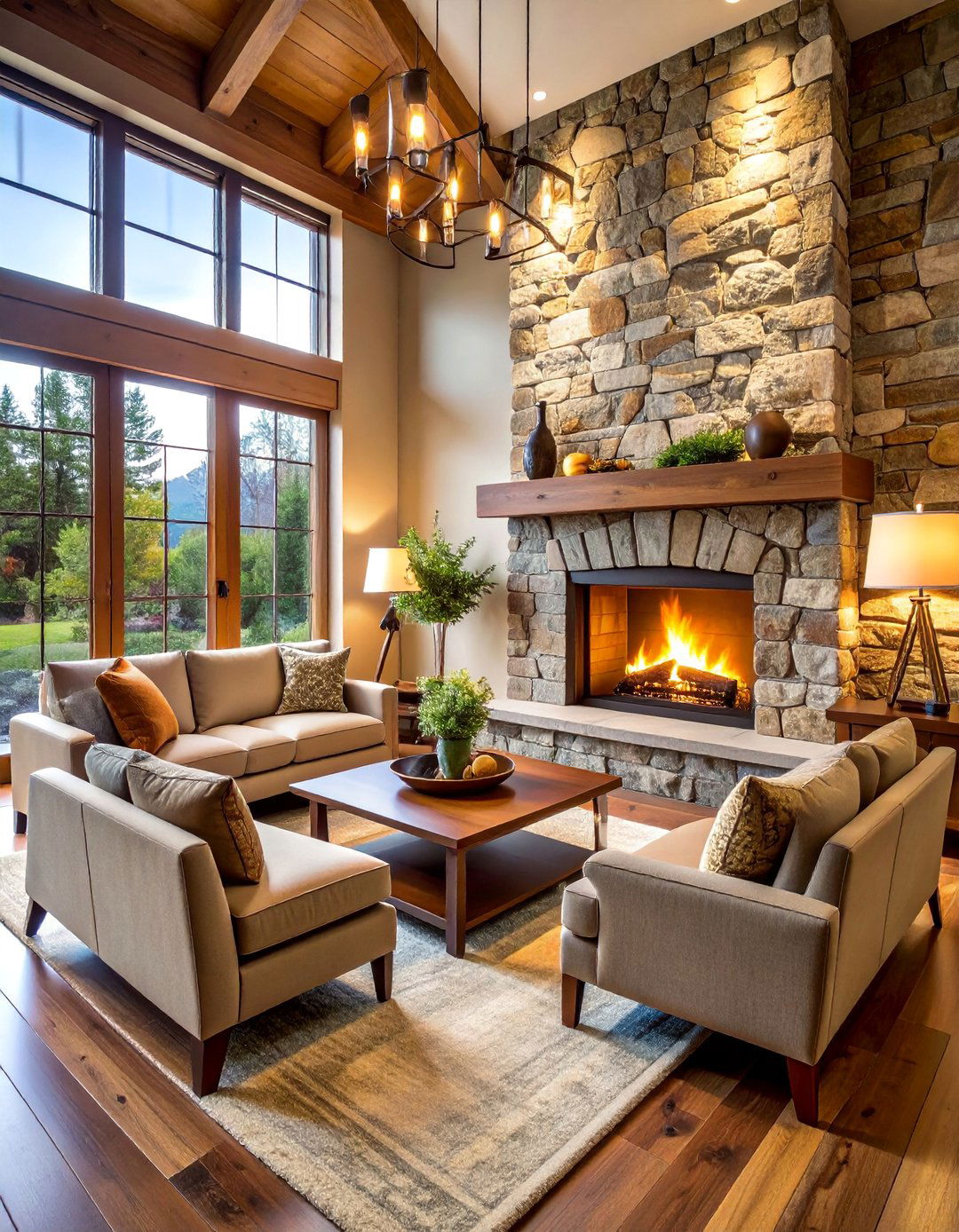
Anchor your living space around a magnificent stone fireplace crafted from local limestone or travertine. The fireplace becomes the heart of the room, surrounded by comfortable seating arrangements that encourage gathering and conversation. Incorporate additional stone elements through accent walls or architectural details, balancing the heavy textures with soft fabrics in warm earth tones. Wooden mantels from reclaimed timber add rustic charm, while iron fireplace tools and screens provide functional beauty. Choose furniture in rich leather or linen upholstery that complements the stone's natural variations. This design creates a cozy retreat perfect for intimate evenings and family gatherings, embodying the welcoming spirit of Italian hospitality.
3. Modern Tuscan Living Room with Contemporary Furniture
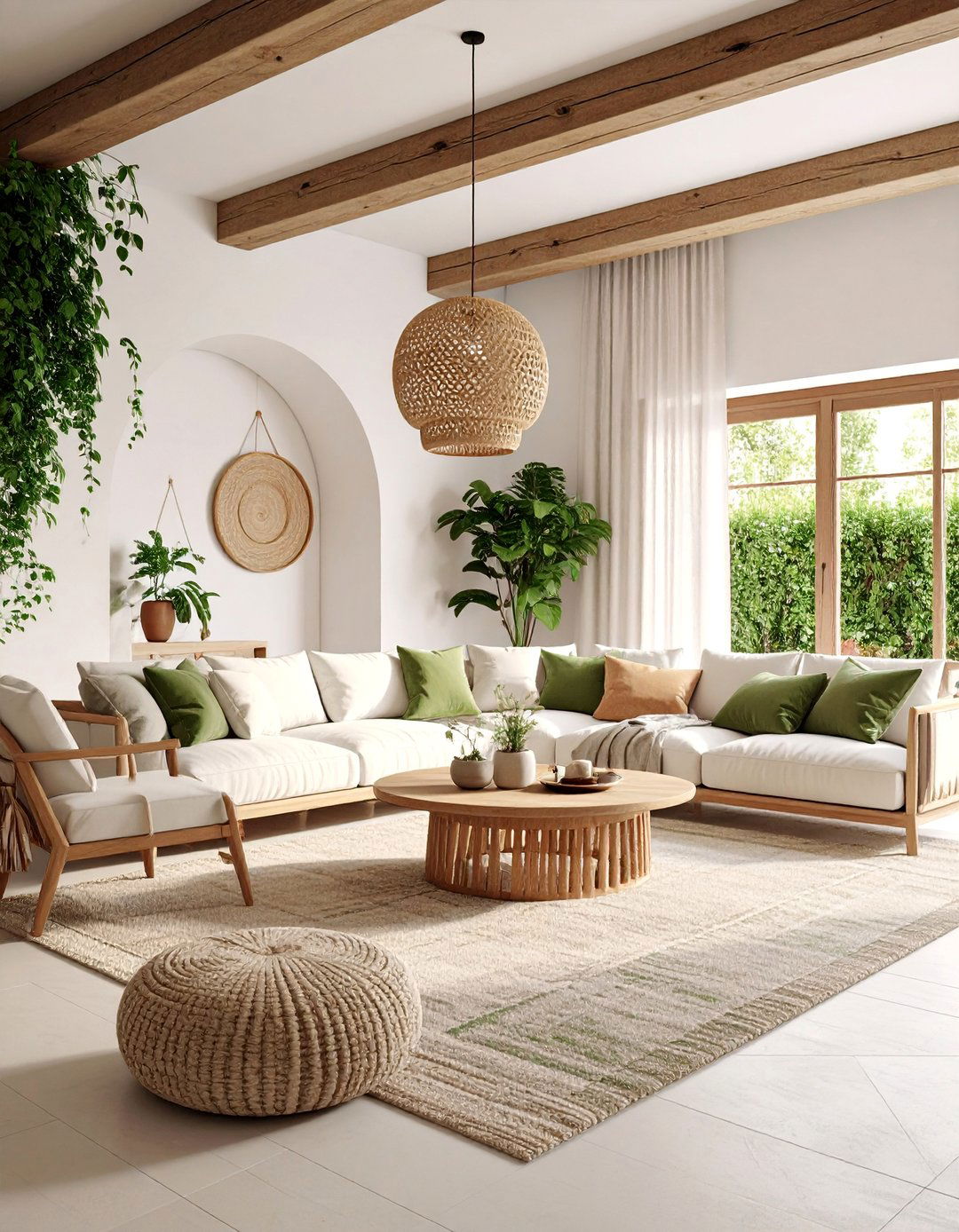
Blend traditional Tuscan elements with sleek contemporary design for a fresh interpretation of Italian style. Start with neutral walls in creamy whites or light grays, then introduce warm accents through carefully chosen accessories and artwork. Select modern furniture with clean lines in rich fabrics, balancing the streamlined aesthetic with rustic architectural features like exposed beams or stone accents. Incorporate pops of terracotta, olive green, or Mediterranean blue through pillows, artwork, and decorative objects. This approach creates a lighter, airier feel while maintaining the warmth and character that defines Tuscan design. The result is a sophisticated space that feels both current and timeless, perfect for contemporary lifestyles.
4. Terracotta and Earth Tone Tuscan Living Room
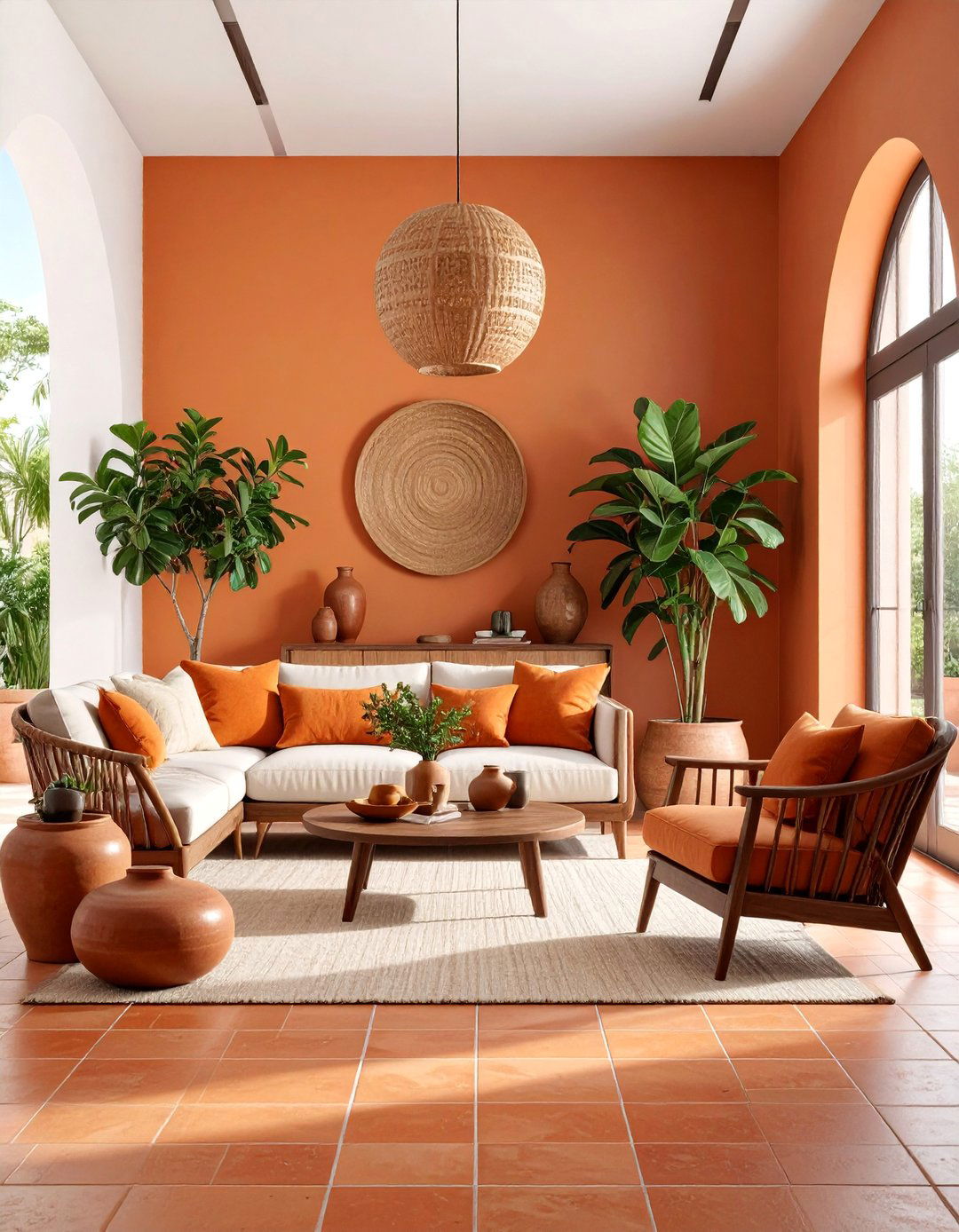
Embrace the warm, sun-baked colors of the Tuscan landscape through a rich palette of terracotta, burnt orange, and golden yellow. Use these hues on walls, upholstery, and decorative accents to create a cohesive, enveloping warmth. Terracotta floor tiles provide an authentic foundation, while pottery and ceramic vessels add textural interest throughout the space. Wooden furniture in dark walnut or mahogany creates beautiful contrast against the warm walls. Include olive green accents through plants, throws, or artwork to represent the rolling hills and vineyards of the countryside. This color-focused approach transforms any living room into a sunlit Mediterranean retreat that radiates comfort and hospitality year-round.
5. Wrought Iron Accent Tuscan Living Room
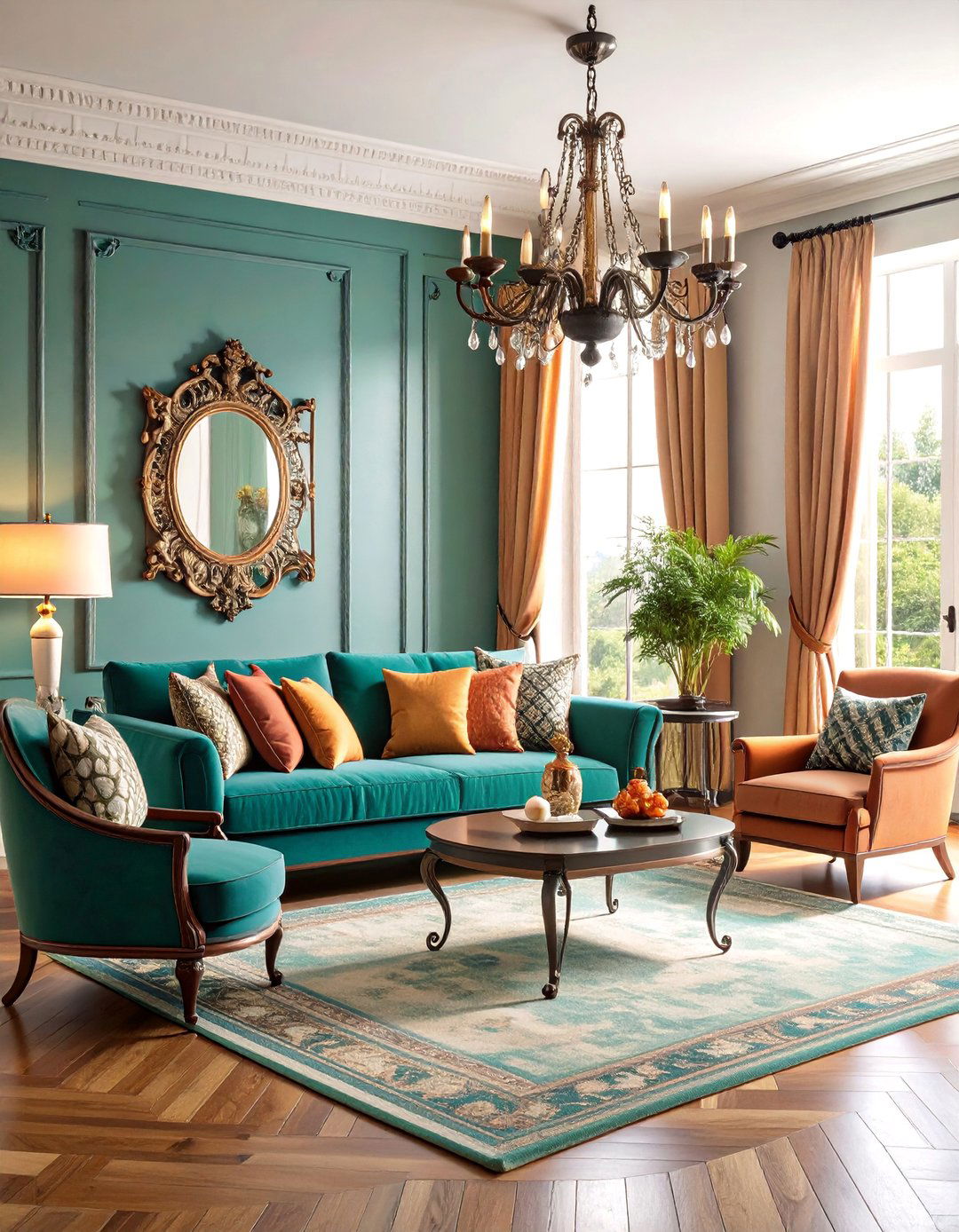
Showcase the artisanal beauty of hand-forged wrought iron throughout your living space. Begin with a statement chandelier featuring intricate scrollwork and multiple candle-style lights, creating dramatic overhead illumination. Incorporate iron elements in side tables, mirror frames, wall sconces, and decorative accessories. Balance these strong metal elements with soft textures in furniture upholstery and window treatments. Choose warm wood tones and natural stone surfaces to complement the iron's dark patina. The contrast between the delicate metalwork and substantial furniture creates visual interest while maintaining the rustic elegance that defines Tuscan style. This approach celebrates traditional Italian craftsmanship while providing durable, beautiful elements that improve with age.
6. Tuscan Villa Living Room with Luxury Textiles
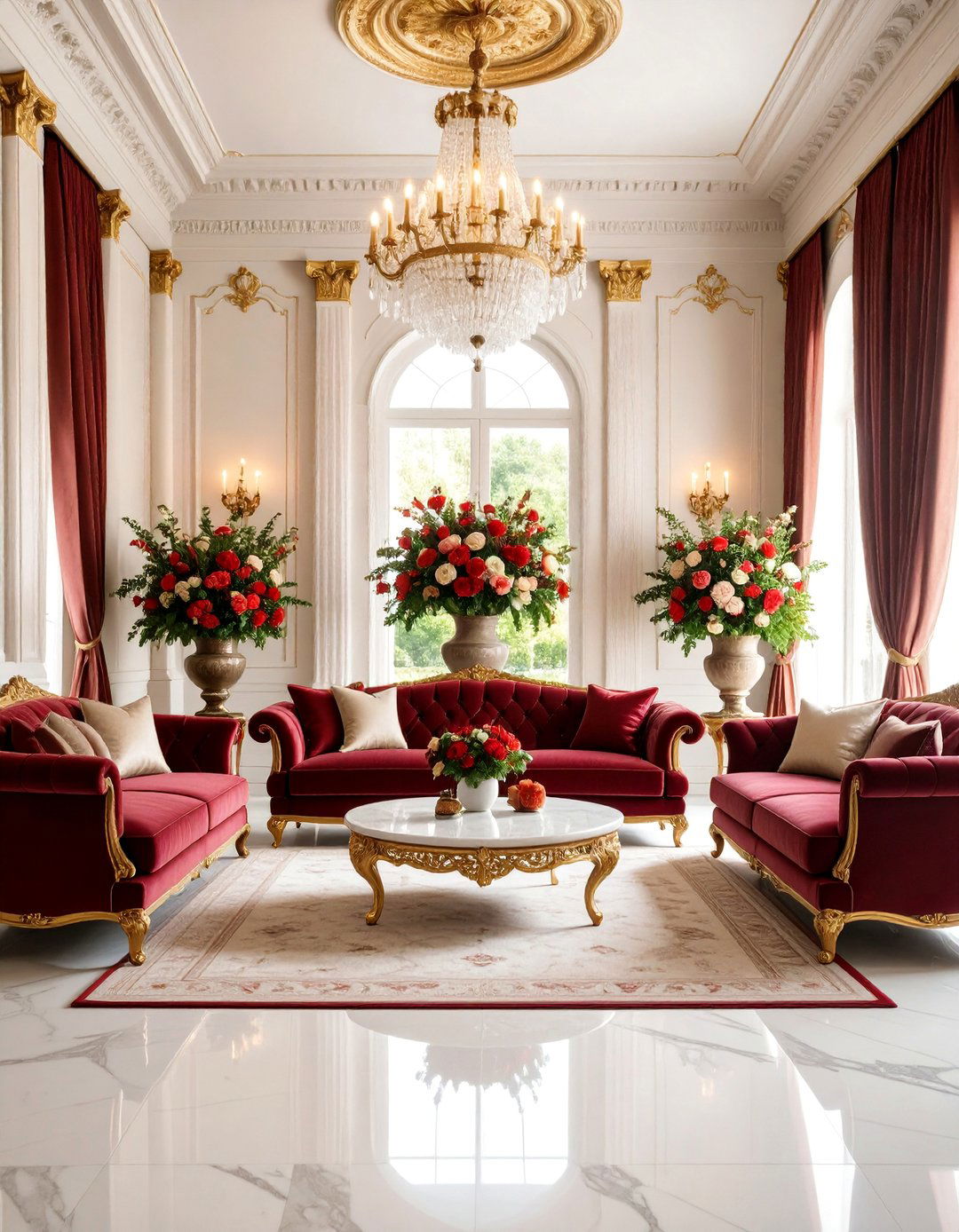
Create an upscale interpretation of Tuscan style through luxurious fabrics and refined furnishings. Rich velvet sofas in deep burgundy or forest green provide sumptuous seating, while silk curtains frame large windows. Incorporate tapestries, embroidered pillows, and antique textiles that tell stories of Italian heritage. Marble or travertine flooring adds elegance, softened by intricately patterned area rugs in traditional designs. Gilded mirrors and ornate picture frames elevate the sophisticated atmosphere. Include fresh flowers in ceramic vases and quality wine accessories to enhance the villa ambiance. This luxurious approach maintains Tuscan warmth while introducing elements of grandeur suitable for formal entertaining and special occasions.
7. Tuscan Farmhouse Living Room with Distressed Wood Furniture
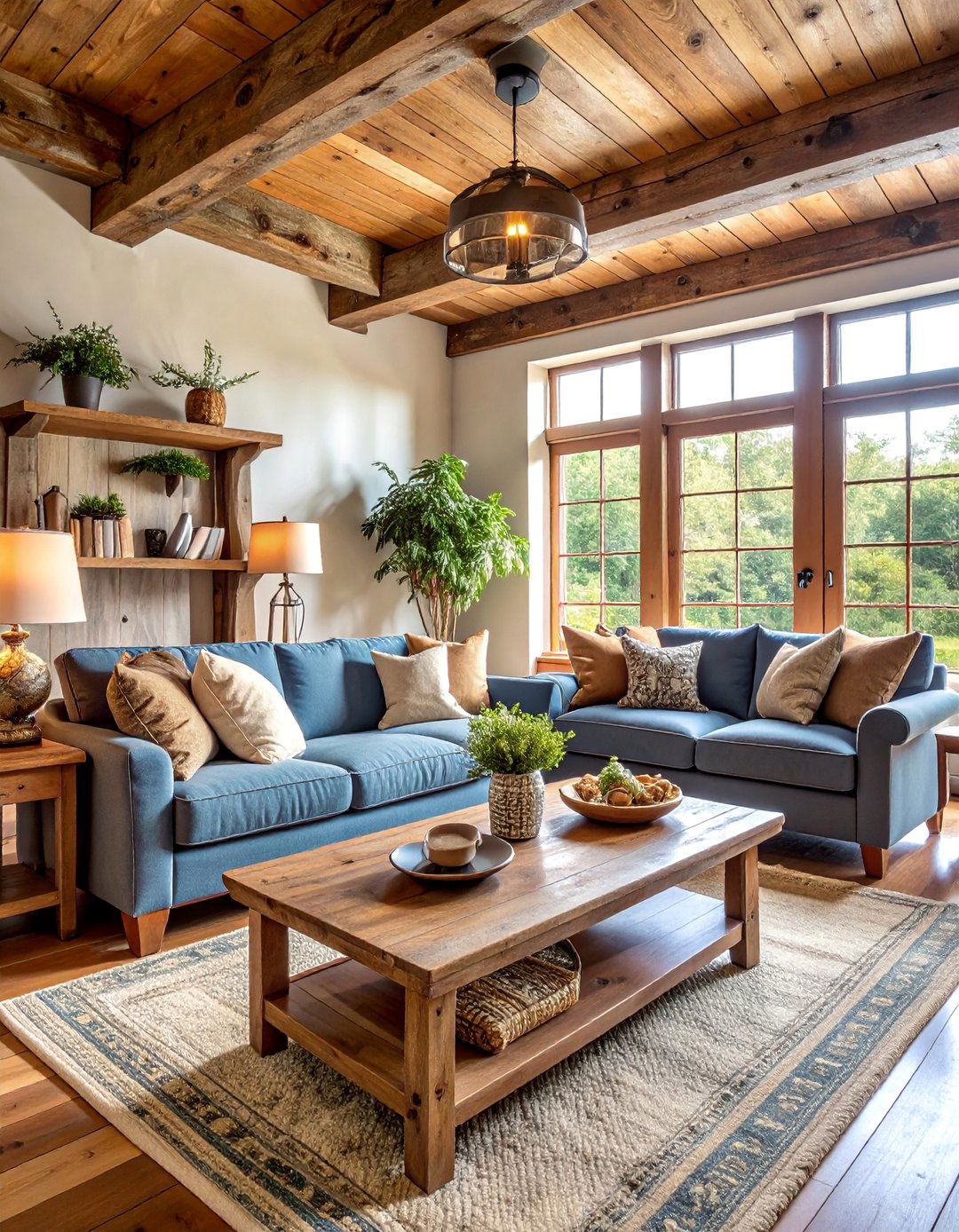
Capture the authentic charm of Italian countryside living through carefully chosen distressed wood furniture pieces. A weathered coffee table with visible wear marks becomes a conversation piece, while aged wooden shelving displays pottery and family treasures. Combine different wood tones and finishes to create an collected-over-time appearance that feels organic and lived-in. Complement the rustic furniture with natural linen upholstery and hand-woven textiles. Stone or tile flooring provides a durable foundation, while exposed wooden beams overhead tie the look together. This approach celebrates the beauty of imperfection and the patina that comes with age, creating a space that feels authentic and welcoming to family and friends.
8. Mediterranean Blue Accent Tuscan Living Room
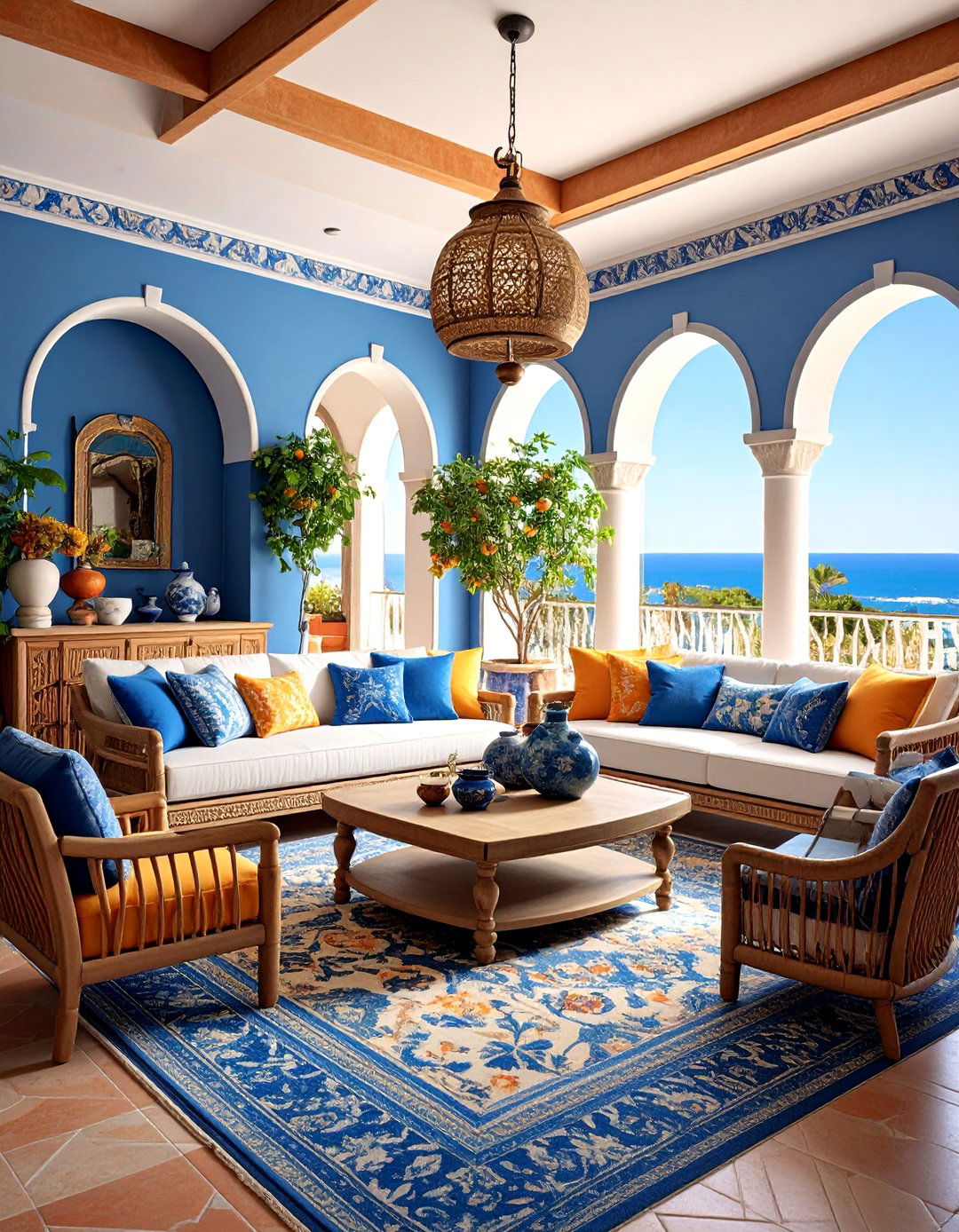
Introduce the refreshing blues of the Mediterranean Sea into your Tuscan-inspired space through carefully placed accent pieces. While maintaining the traditional warm earth tone foundation, incorporate deep navy or azure blue through ceramic tiles, pottery, artwork, and textiles. These blue elements evoke coastal breezes and clear skies, adding freshness to the typically warm palette. Use blue sparingly but strategically - perhaps in a statement piece of furniture, decorative bowls, or painted ceiling details. The contrast between warm terracotta walls and cool blue accents creates visual interest while maintaining the authentic Italian aesthetic. This approach brings lightness and energy to traditional Tuscan design.
9. Arched Doorway Tuscan Living Room with Architectural Details
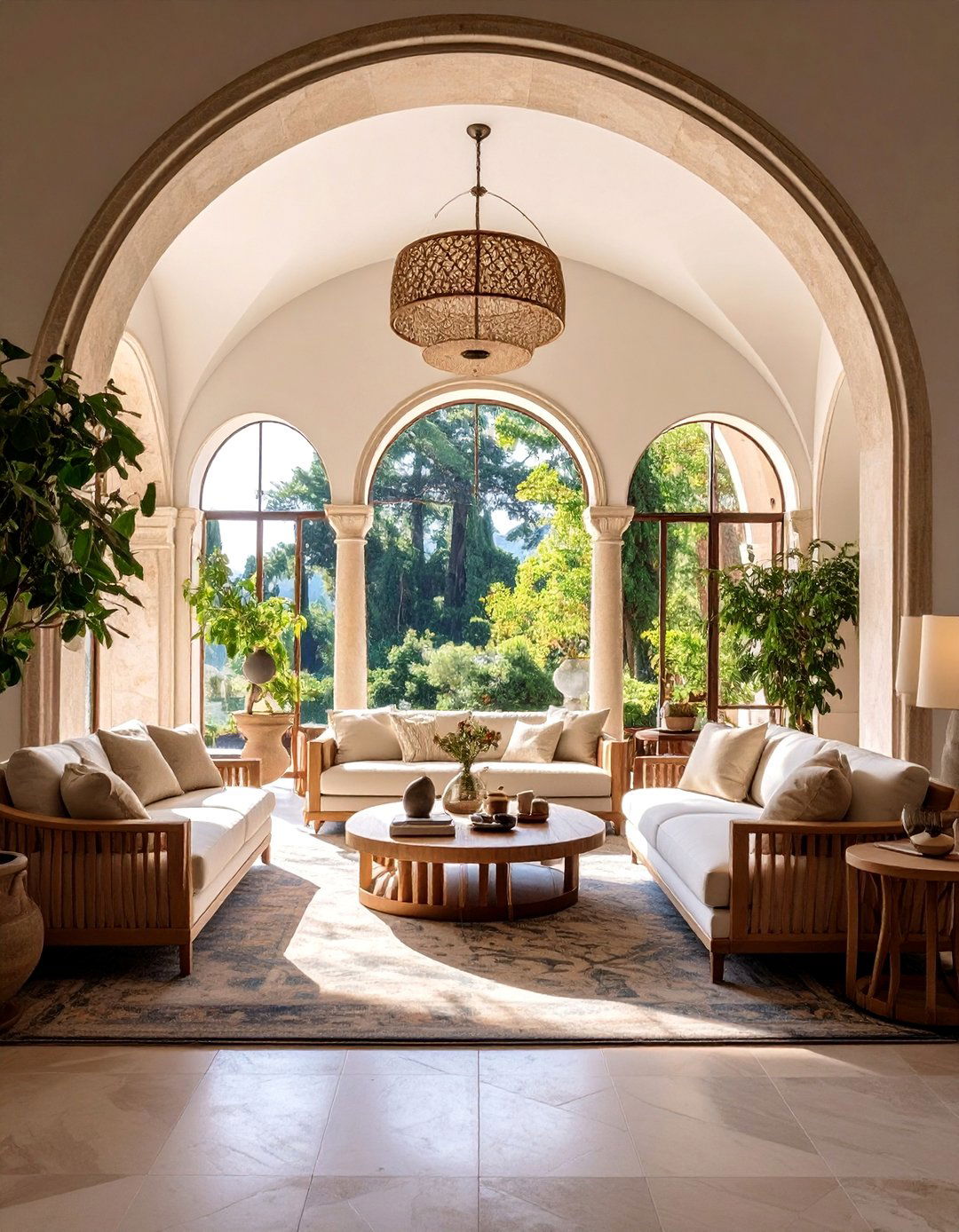
Emphasize the graceful architectural elements that define Italian design through prominent arched doorways and openings. These curved transitions soften the movement between spaces while creating elegant focal points throughout the living area. Frame these arches with natural stone or decorative plaster to enhance their impact. Complement the architectural features with furniture that echoes these curved lines - perhaps an arched mirror or rounded coffee table. Use lighting to highlight the beautiful proportions and create dramatic shadows that emphasize the three-dimensional quality of the space. This design approach celebrates the structural beauty of Italian architecture while creating a sense of grandeur and timeless elegance.
10. Tuscan Living Room with Vintage Leather Furniture
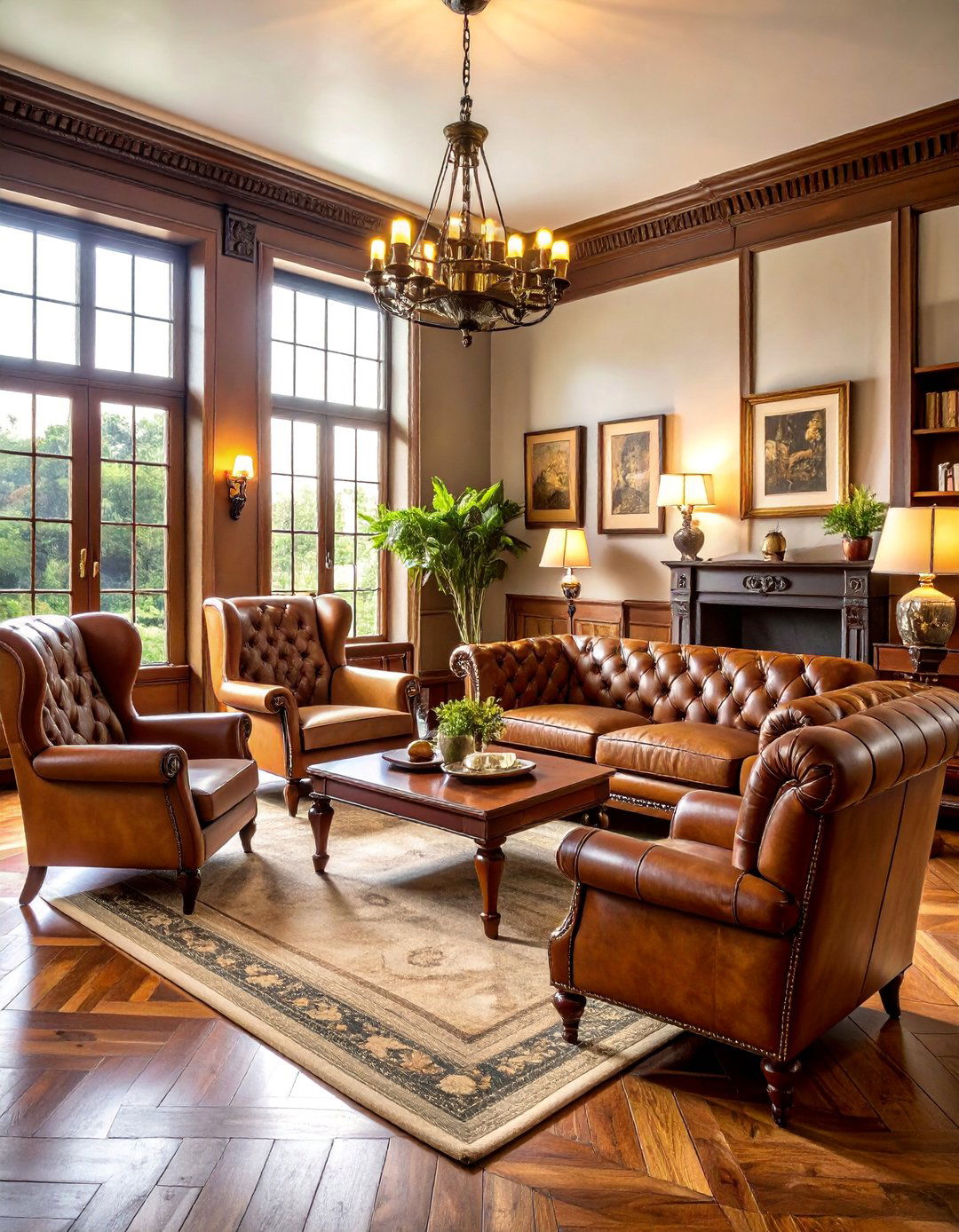
Anchor your space with rich, aged leather furniture that develops character over time. Choose pieces with traditional silhouettes - perhaps a Chesterfield sofa or wing-back chairs - in deep brown or cognac leather that complements warm wall colors. The natural patina and soft texture of quality leather adds luxury while maintaining the rustic appeal essential to Tuscan style. Pair leather seating with wooden side tables and wrought iron accents for authentic Italian charm. Include brass or copper details through lighting and accessories to enhance the warm, golden tones of the leather. This timeless approach creates a masculine yet inviting atmosphere perfect for reading, conversation, or quiet contemplation.
11. Natural Stone Wall Tuscan Living Room
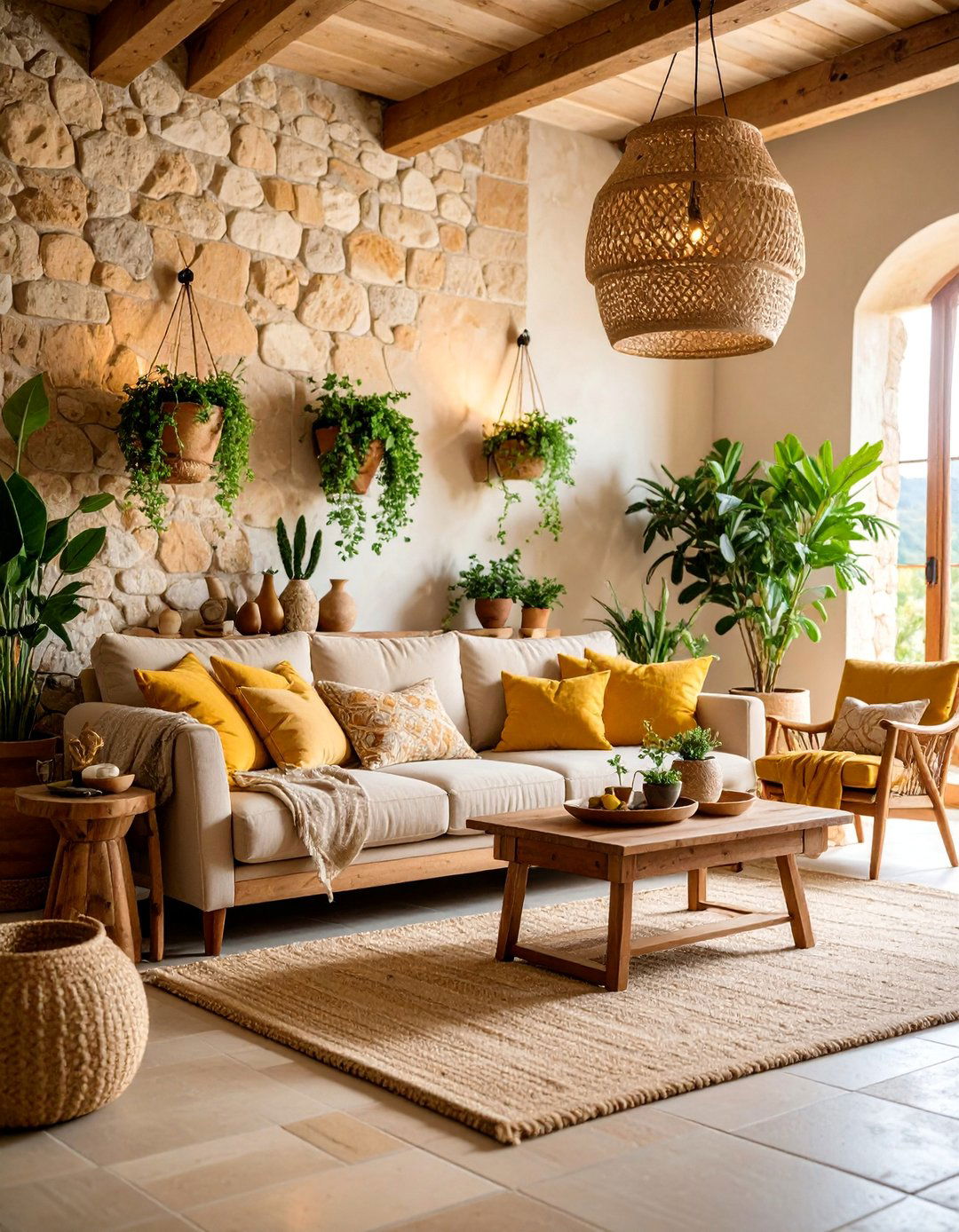
Create dramatic impact with an accent wall of natural stone that brings the Italian countryside indoors. Choose limestone, travertine, or sandstone with interesting textures and color variations that add depth and character to your space. Balance this strong architectural element with softer furnishings in warm fabrics and lighter colors. The stone wall becomes a beautiful backdrop for artwork, mirrors, or decorative sconces. Include wooden furniture pieces that complement the stone's natural tones, and add plants or fresh herbs to soften the harder surfaces. This approach creates a stunning focal point while maintaining the connection to nature that defines authentic Tuscan design.
12. Tuscan Living Room with Ceramic and Pottery Collections

Display the artistic heritage of Italian ceramics through carefully curated collections of pottery, vases, and decorative objects. Arrange pieces of varying sizes and colors on wooden shelves, mantels, or side tables to create visual interest and cultural authenticity. Choose handmade pieces with traditional patterns or simple, rustic finishes that reflect regional craftsmanship. Include both functional and decorative items - perhaps serving bowls alongside purely ornamental pieces. The warm glazes and earthy textures of ceramic pottery add color and personality while celebrating the artisanal traditions of Tuscany. This approach brings cultural depth and personal character to your living space while maintaining the welcoming, lived-in feeling essential to Italian design.
13. Vaulted Ceiling Tuscan Living Room with Dramatic Height

Maximize the impact of high vaulted ceilings through strategic design choices that emphasize vertical space and architectural grandeur. Expose structural elements like wooden trusses or stone supports to add authentic character and visual weight. Use lighting to highlight these architectural features while creating intimate seating areas below. Choose furniture with appropriate scale - perhaps a large sectional sofa or substantial coffee table that anchors the space without being dwarfed by the ceiling height. Include tall plants or floor-to-ceiling drapery to bridge the gap between furniture and ceiling. This dramatic approach creates a sense of grandeur while maintaining the cozy, inviting atmosphere that makes Tuscan design so appealing.
14. Tuscan Living Room with Outdoor-Indoor Connection

Blur the boundaries between interior and exterior spaces through large doors, windows, or openings that connect your living room to patios, gardens, or courtyards. Use similar materials and colors both inside and outside to create visual continuity - perhaps stone flooring that extends from interior to patio, or consistent color schemes in furnishings and plantings. Include potted herbs, olive trees, or Mediterranean plants that reinforce the connection to nature. Natural materials like wood, stone, and iron work beautifully in both settings. This approach captures the Italian love of outdoor living while extending your usable space and creating a seamless flow between indoor comfort and outdoor beauty.
15. Iron and Glass Light Fixture Tuscan Living Room
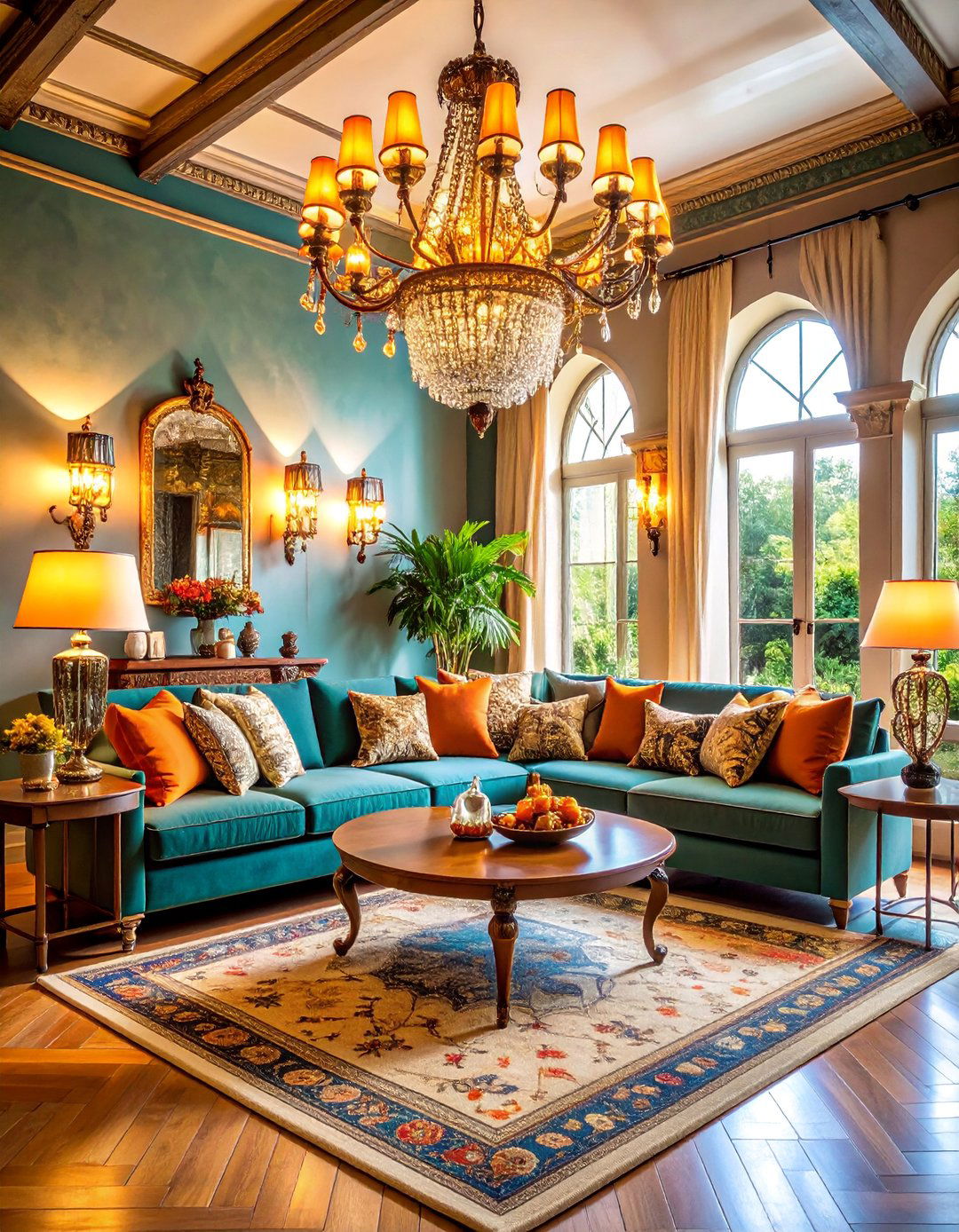
Create stunning focal points through carefully chosen iron and glass lighting fixtures that combine functionality with artistic beauty. A large wrought iron chandelier with glass shades becomes the centerpiece of your room, casting warm, ambient light throughout the space. Complement overhead lighting with table lamps featuring iron bases and warm-toned lampshades, plus wall sconces that provide task lighting and architectural interest. The combination of iron's strength and glass's delicacy reflects the balance between rustic and refined elements that characterizes Tuscan design. Choose fixtures with hand-forged details and warm metal finishes that develop beautiful patina over time. This lighting-focused approach creates atmosphere while celebrating traditional metalworking craftsmanship.
16. Neutral Palette Modern Tuscan Living Room

Embrace a sophisticated interpretation of Tuscan style through a refined neutral color palette that emphasizes texture and form over bold colors. Use creamy whites, soft beiges, and warm grays as your foundation, then introduce subtle warmth through natural wood tones and soft textile choices. This lighter approach maintains Tuscan character while feeling fresh and contemporary. Include traditional elements like stone accents or wrought iron details, but in more restrained applications. Natural light becomes especially important in neutral schemes, so maximize windows and use mirrors strategically to enhance brightness. The result is a serene, sophisticated space that honors Tuscan traditions while feeling thoroughly modern and livable.
17. Tuscan Living Room with Antique and Heirloom Pieces
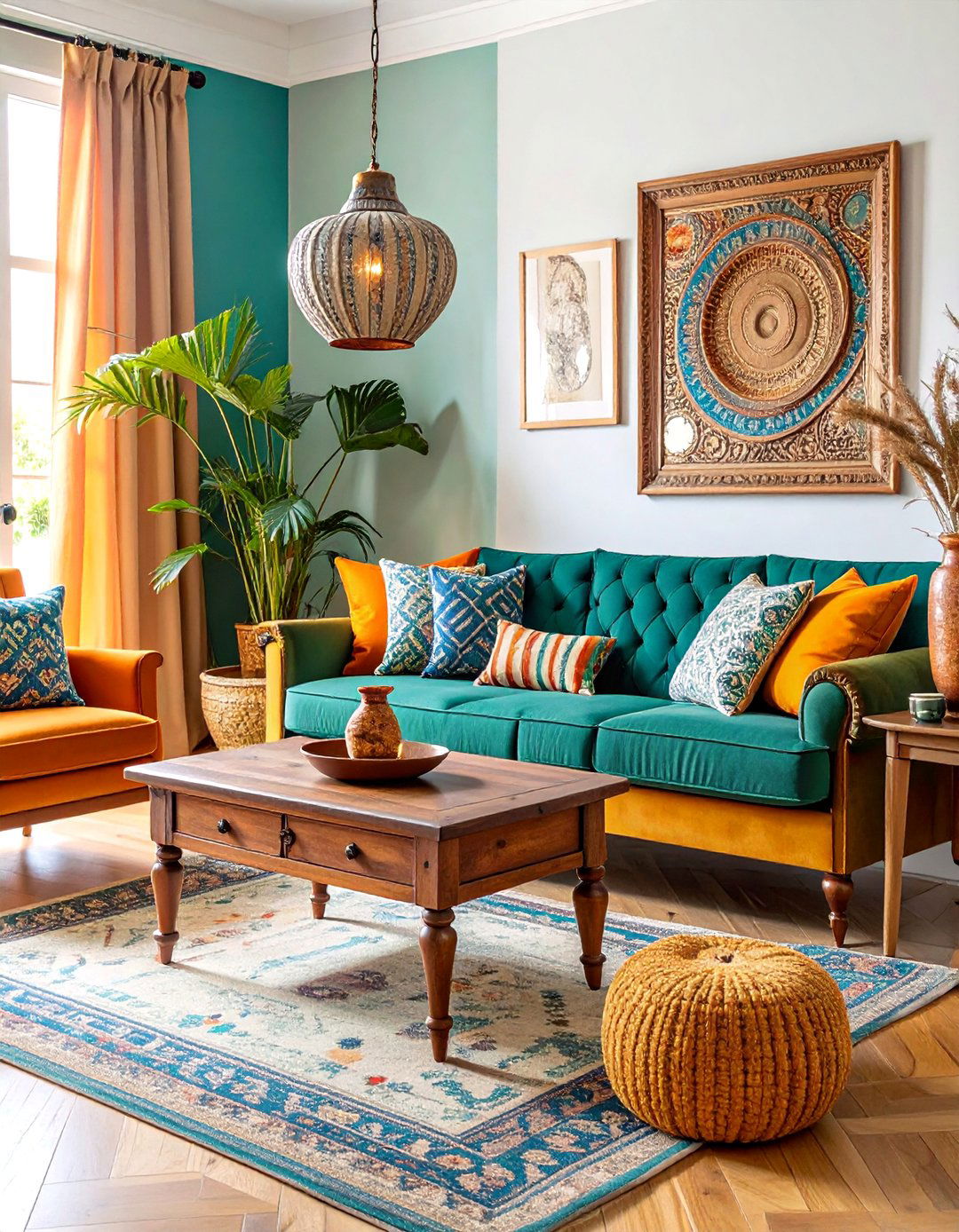
Celebrate family history and Italian heritage through carefully integrated antique furniture and meaningful heirloom pieces. Mix vintage finds with contemporary comfort pieces to create a space that feels collected over generations rather than decorated all at once. An antique wooden chest might serve as a coffee table, while inherited ceramic pieces are displayed on modern shelving. Include family photographs in ornate frames and textile pieces that tell personal stories. The key is balancing old and new elements so each enhances the other. This approach creates deeply personal spaces with authentic character that can't be purchased but must be developed over time through careful curation and meaningful collecting.
18. Tuscan Living Room with Hand-Painted Wall Finishes
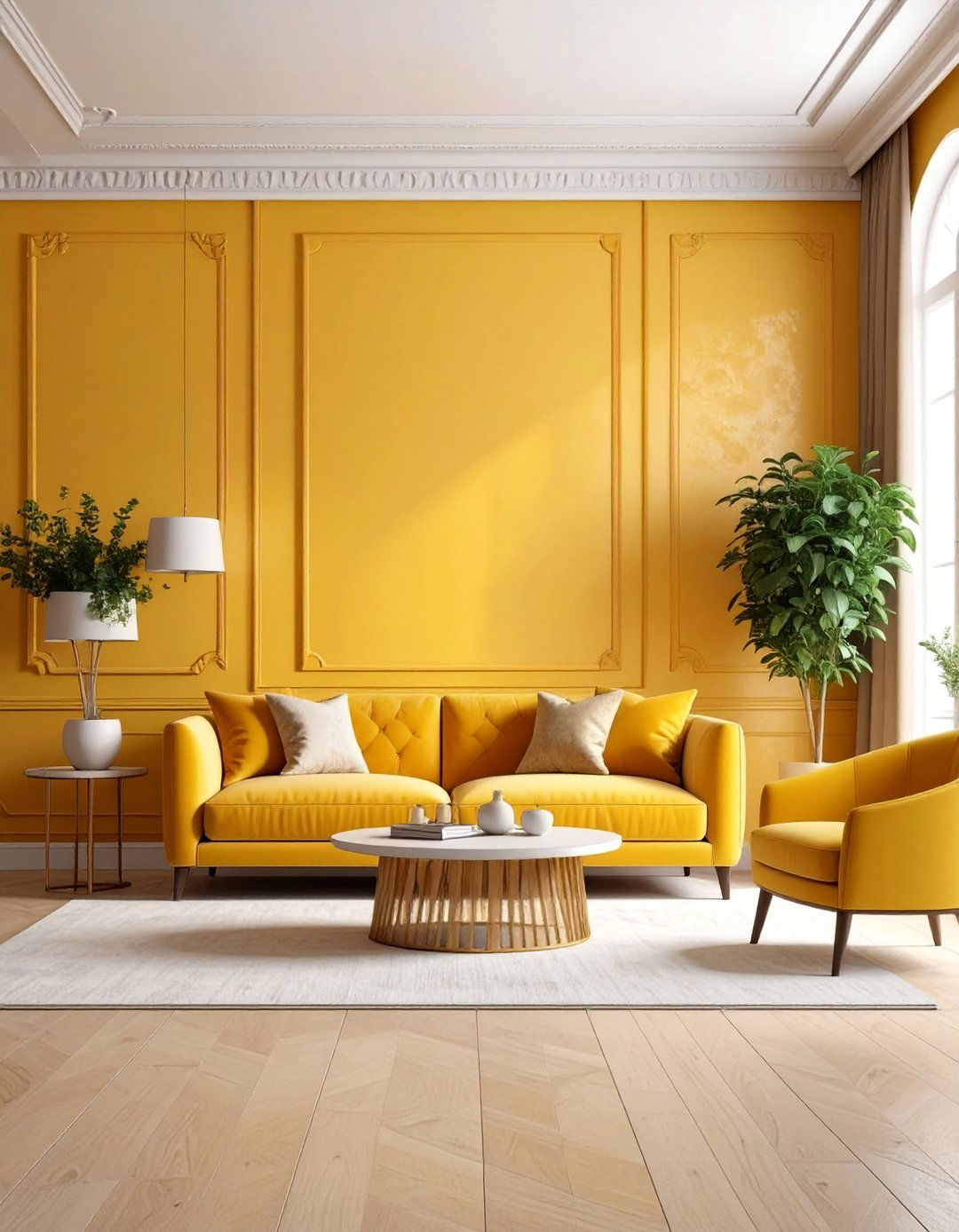
Transform plain walls into works of art through traditional hand-painted finishes that add depth, texture, and authentic Italian character. Techniques like fresco, lime wash, or decorative plaster create subtle color variations and visual interest that can't be achieved with standard paint. Choose warm, earthy tones that evoke the sun-washed walls of Tuscan villages - perhaps golden yellows with subtle orange undertones or rich terracotta with deeper red accents. These artisanal finishes provide a perfect backdrop for furniture and artwork while adding the custom, handcrafted quality that defines authentic Tuscan interiors. The textural walls become art in themselves, creating a sophisticated foundation for your entire design scheme.
19. Cozy Tuscan Reading Nook Living Room
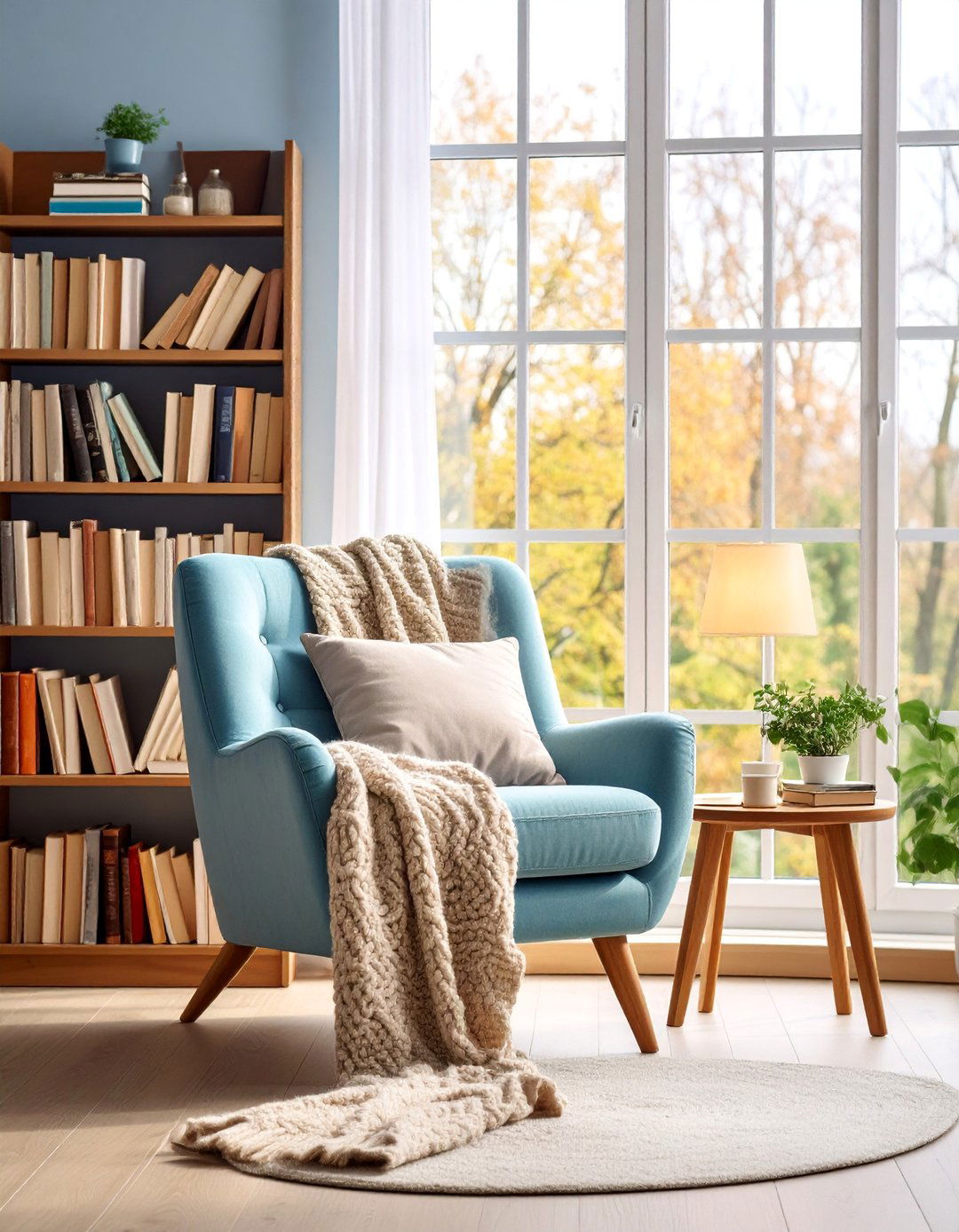
Create an intimate reading corner within your larger living space using traditional Tuscan elements scaled for comfort and function. Position a comfortable armchair near a window to take advantage of natural light, with a side table for books and beverages. Include good task lighting through a table lamp or wall sconce with warm-toned bulbs. Use warm, inviting colors and soft textures that encourage relaxation - perhaps a wool throw or velvet cushions. A small bookshelf filled with favorite volumes and decorative objects completes the vignette. This approach acknowledges the Italian appreciation for leisure and contemplation while creating a dedicated space for quiet activities within a larger social area.
20. Tuscan Living Room with Wine Country Inspiration

Draw inspiration from Tuscany's famous wine regions through colors, accessories, and decorative elements that celebrate viticulture and the good life. Include deep burgundy and wine red accents alongside traditional earth tones, perhaps through upholstery, artwork, or decorative objects. Display wine-related accessories like vintage bottles, ceramic wine jugs, or copper serving pieces that reference the region's viticultural heritage. Include grape vine motifs in textiles or artwork, and consider fresh grape clusters as seasonal decoration. A wine storage area or serving cart can be both functional and decorative. This thematic approach creates a sophisticated atmosphere perfect for entertaining while honoring one of Tuscany's most famous cultural contributions.
21. Tuscan Living Room with Mosaic Tile Accents
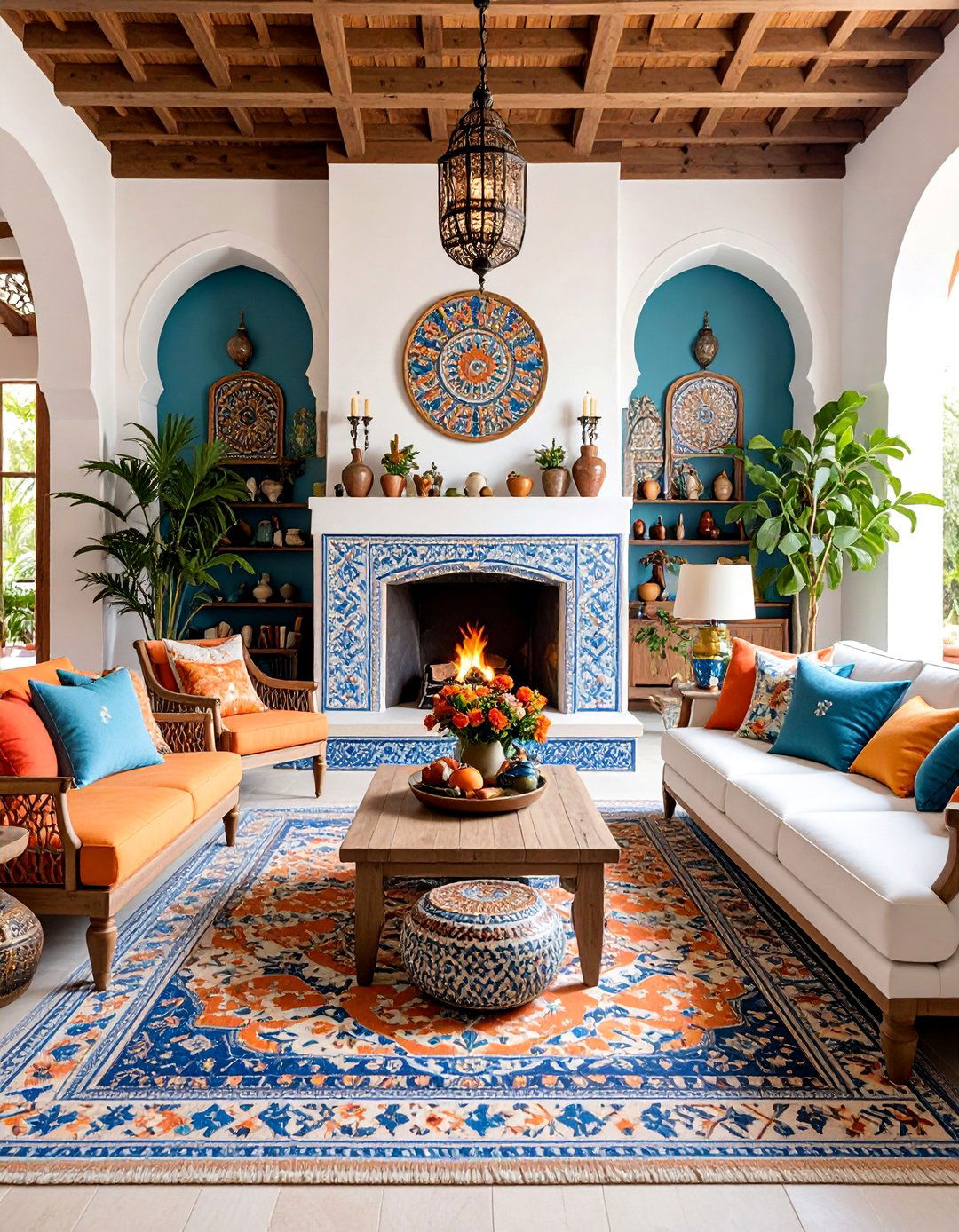
Incorporate the ancient art of mosaic tilework through accent areas that add color, pattern, and cultural authenticity to your living space. Use mosaic tiles around a fireplace surround, as a decorative border, or to create artistic focal points on walls or floors. Choose earthy colors and traditional patterns that complement your overall design scheme while adding visual interest and texture. The handcrafted quality of mosaic work reflects the artisanal traditions valued in Italian design. Balance these detailed areas with simpler surfaces to prevent visual overwhelm. This approach adds cultural depth and artistic character while celebrating the Mediterranean tradition of decorative tilework that has enriched Italian interiors for centuries.
22. Rustic Wood Beam Coffee Table Tuscan Living Room
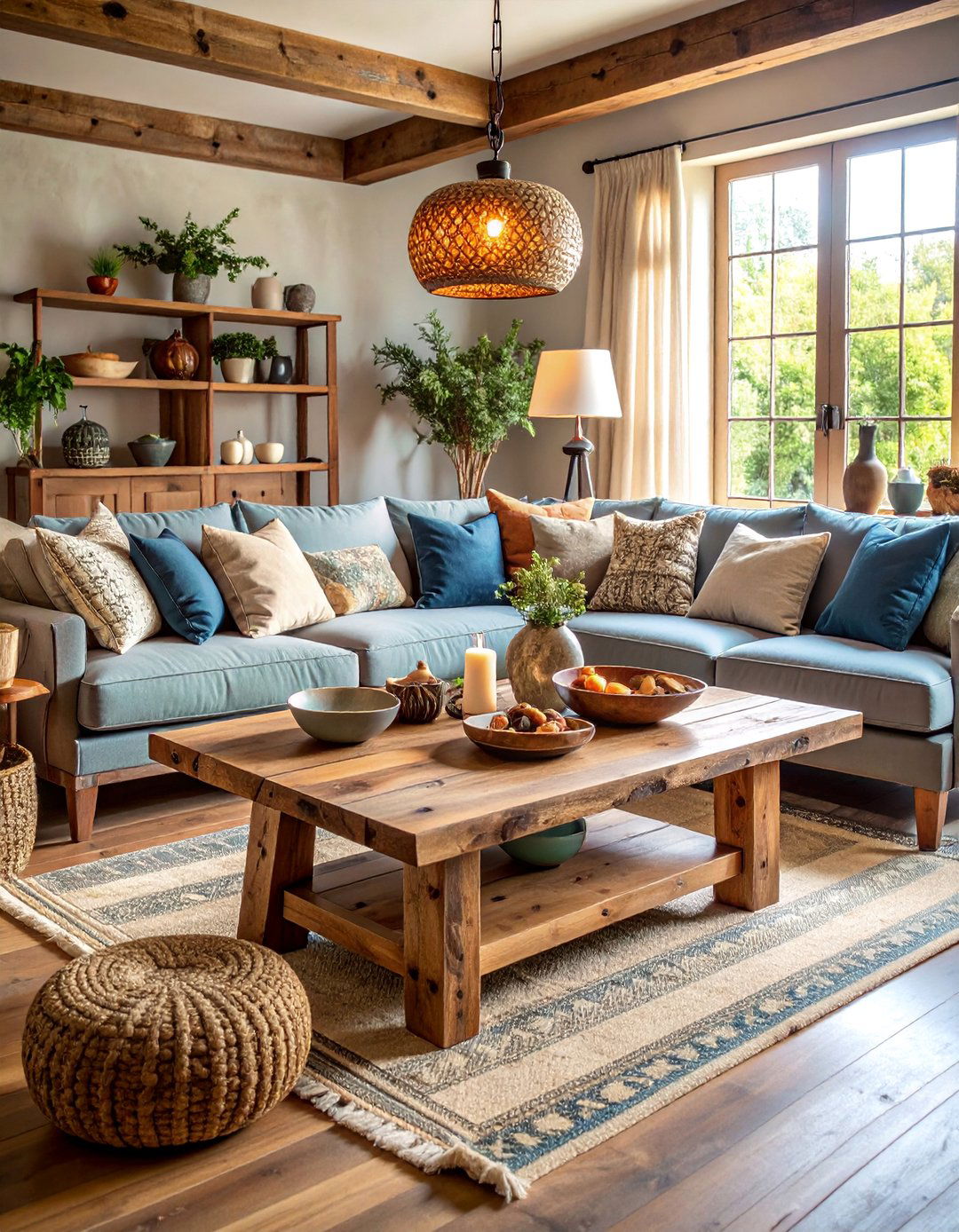
Center your seating arrangement around a substantial coffee table crafted from reclaimed wood beams that embody authentic Tuscan character. These massive wooden pieces, perhaps salvaged from old barns or buildings, become sculptural focal points that anchor your furniture grouping. The weathered wood surface tells stories through its imperfections, scratches, and natural wear patterns. Pair this substantial piece with comfortable seating that complements rather than competes with its rustic presence. Include accessories that highlight the wood's natural beauty - perhaps simple ceramic bowls, candles, or fresh flowers. This furniture-focused approach celebrates the beauty of natural materials while creating a functional centerpiece for family gathering and entertaining.
23. Tuscan Living Room with Layered Textile Elements

Create visual richness and comfort through thoughtfully layered textiles that add warmth, color, and texture throughout your living space. Combine different fabrics, patterns, and textures - perhaps linen curtains, velvet pillows, wool throws, and woven rugs - in a cohesive color palette of warm earth tones. Each textile layer adds depth and interest while contributing to the overall comfort and livability of the space. Include both smooth and rough textures, light and heavy weights, and subtle pattern variations that create visual movement without overwhelming the senses. This approach emphasizes the Italian love of beautiful, tactile materials while creating a cozy, inviting atmosphere perfect for relaxation and family gathering.
24. Formal Tuscan Dining Living Room Combination
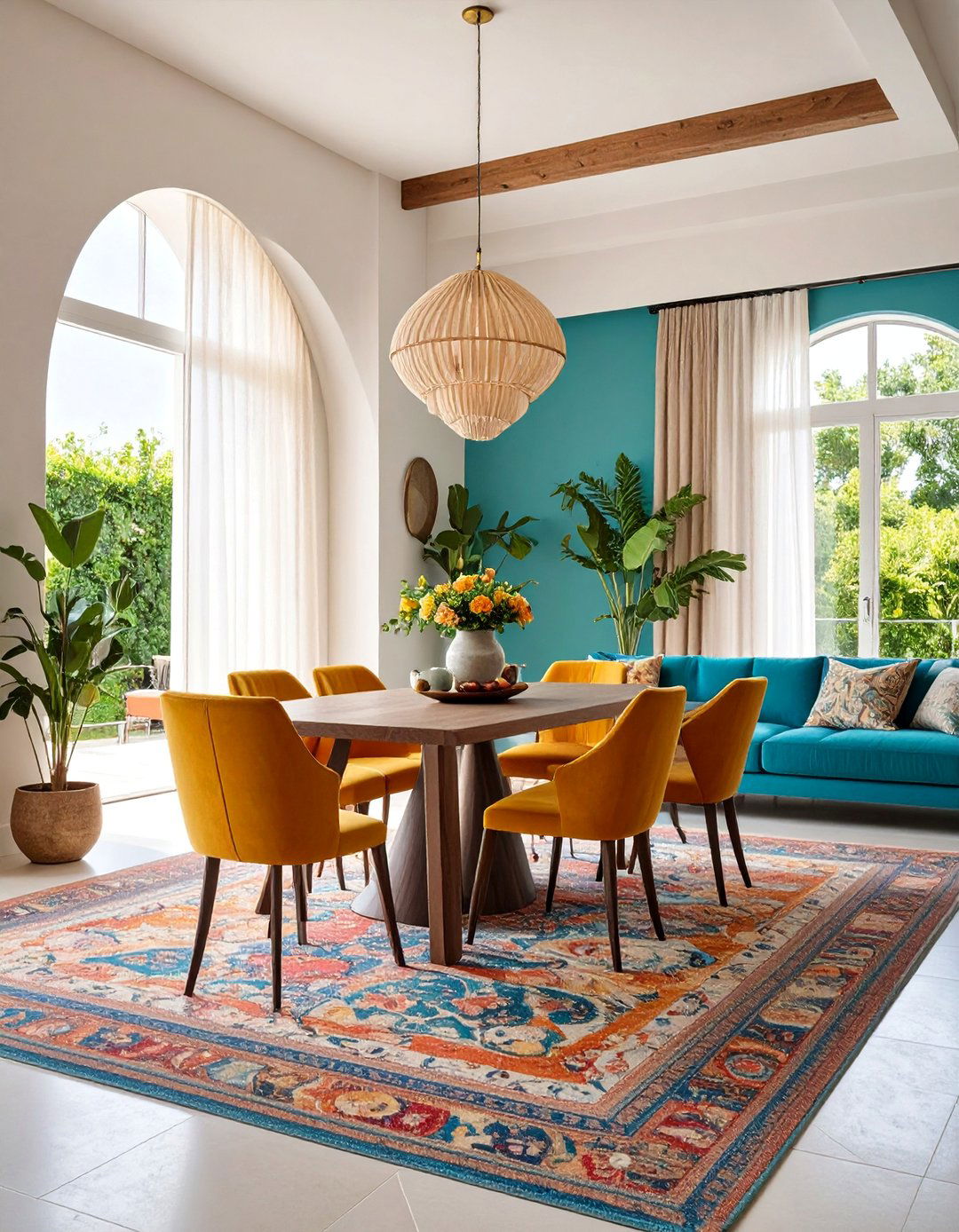
Design an elegant great room that seamlessly combines living and dining functions while maintaining sophisticated Tuscan character throughout both areas. Use consistent materials, colors, and design elements to create visual flow between the two spaces while defining each area's specific function. A large area rug might anchor the living area, while a substantial dining table creates the dining zone. Include architectural elements like columns or archways that provide subtle separation without blocking sight lines. Choose furniture with similar proportions and finishes that work harmoniously together. This open-concept approach reflects modern living while honoring traditional Italian design principles of beauty, function, and family-centered hospitality.
25. Small Space Tuscan Living Room with Smart Storage

Maximize the impact of Tuscan design in compact living spaces through careful space planning and multi-functional furniture choices. Choose pieces that serve multiple purposes - perhaps an ottoman with hidden storage or a coffee table with built-in shelving. Use vertical space effectively through wall-mounted shelving and strategic lighting placement. Light colors and mirrors help create the illusion of more space while maintaining authentic Tuscan character through material choices and accessories. Include key elements like warm colors, natural materials, and handcrafted details, but in appropriately scaled applications. This approach proves that Tuscan style can work beautifully in any size space when thoughtfully adapted to specific spatial constraints and functional requirements.
Conclusion:
These diverse Tuscan living room ideas demonstrate the versatility and enduring appeal of Italian-inspired design. From rustic farmhouse charm to sophisticated modern interpretations, each approach celebrates natural materials, warm colors, and the Italian philosophy of creating beautiful, livable spaces. Whether you prefer traditional exposed beams and stone fireplaces or contemporary neutral palettes with subtle Mediterranean accents, Tuscan style offers endless possibilities for creating welcoming, character-rich living rooms that feel both timeless and thoroughly comfortable for modern family life.


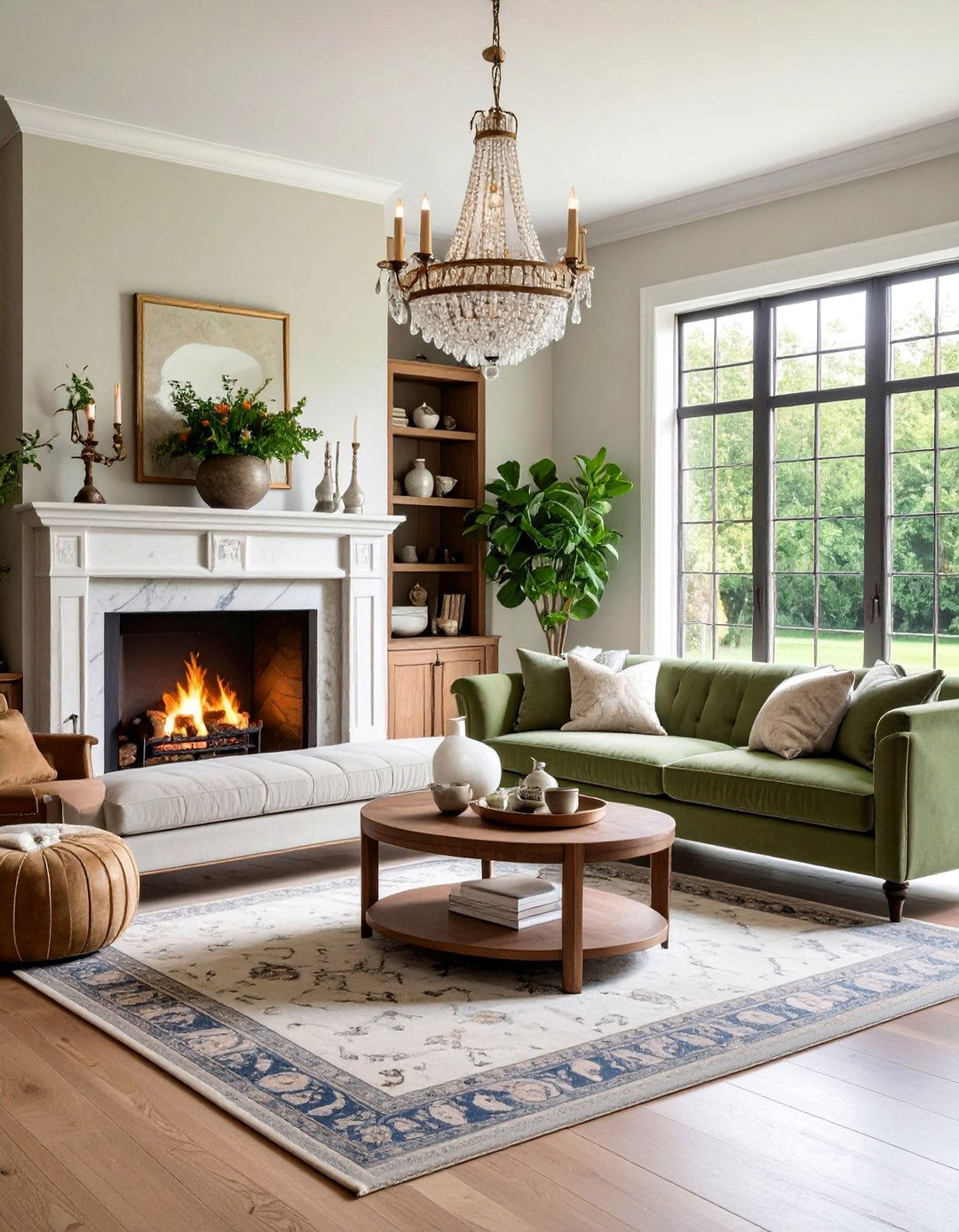
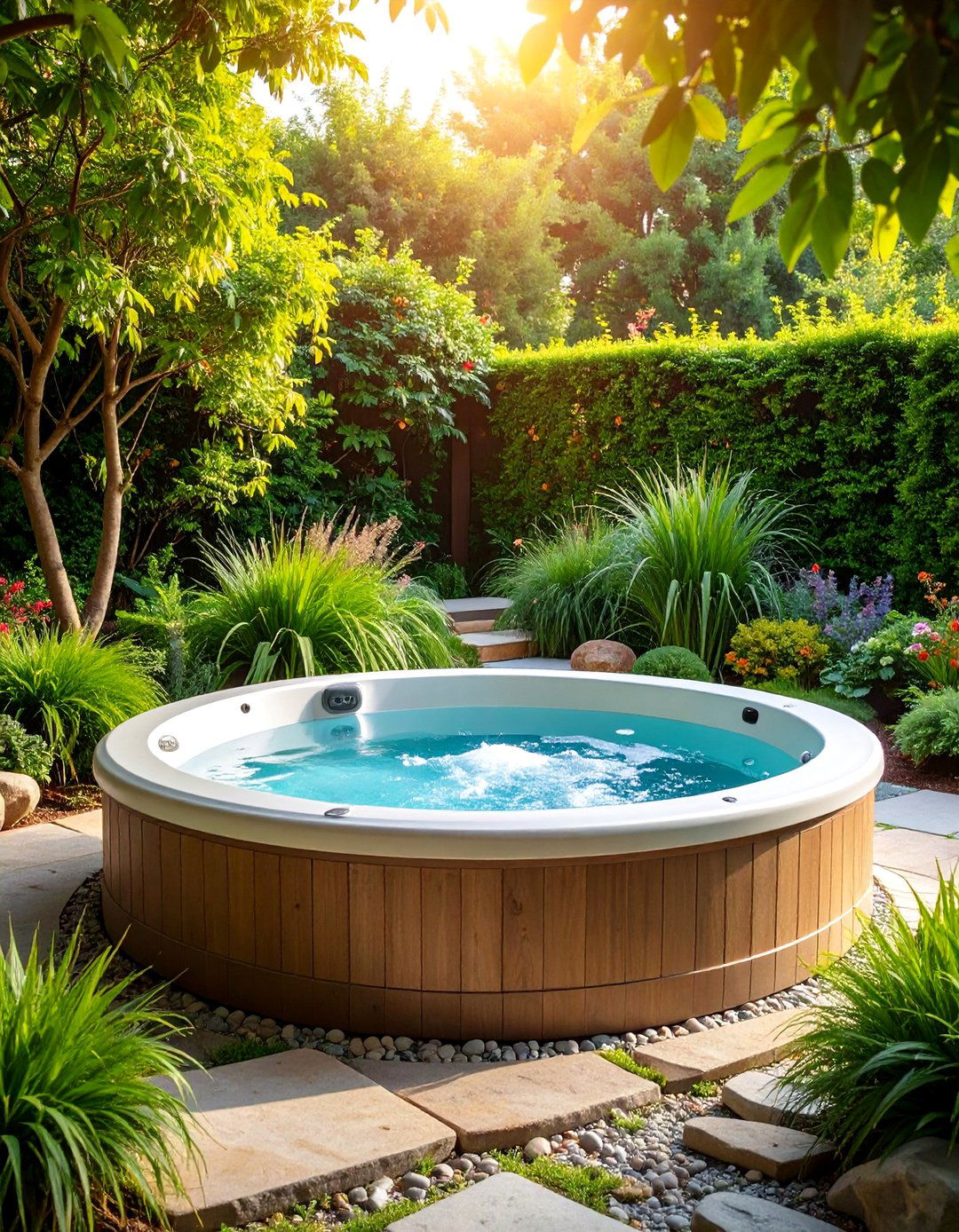

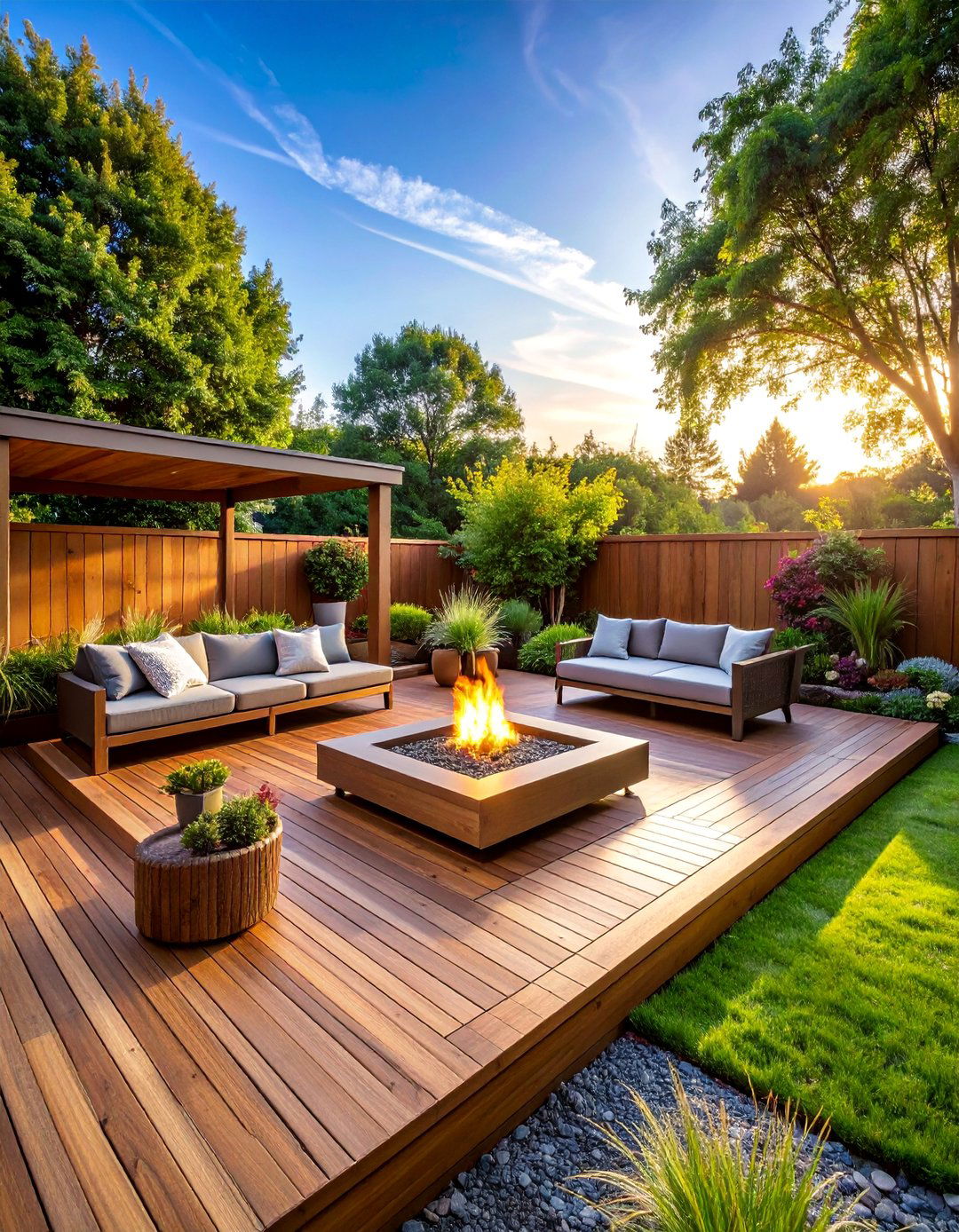
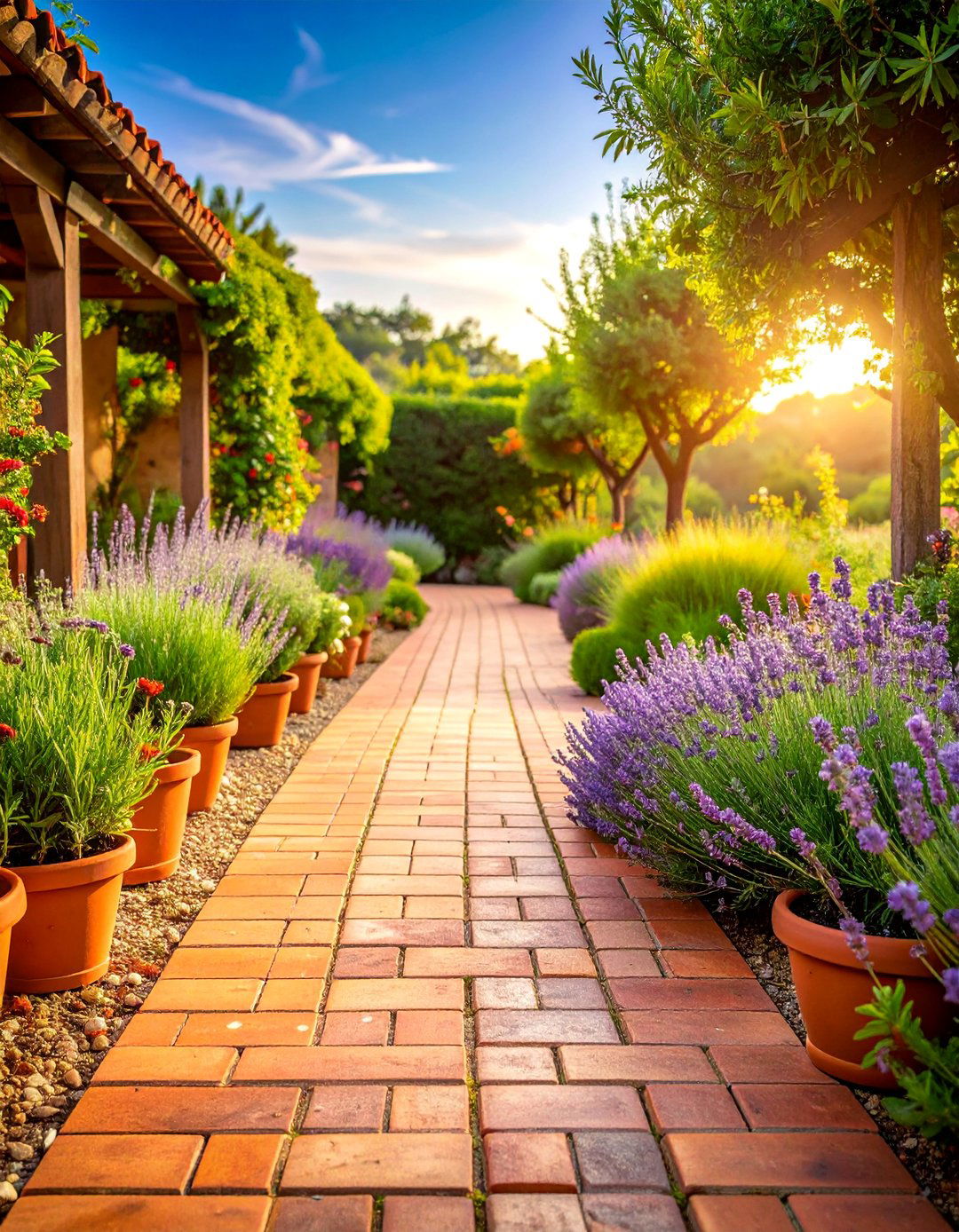
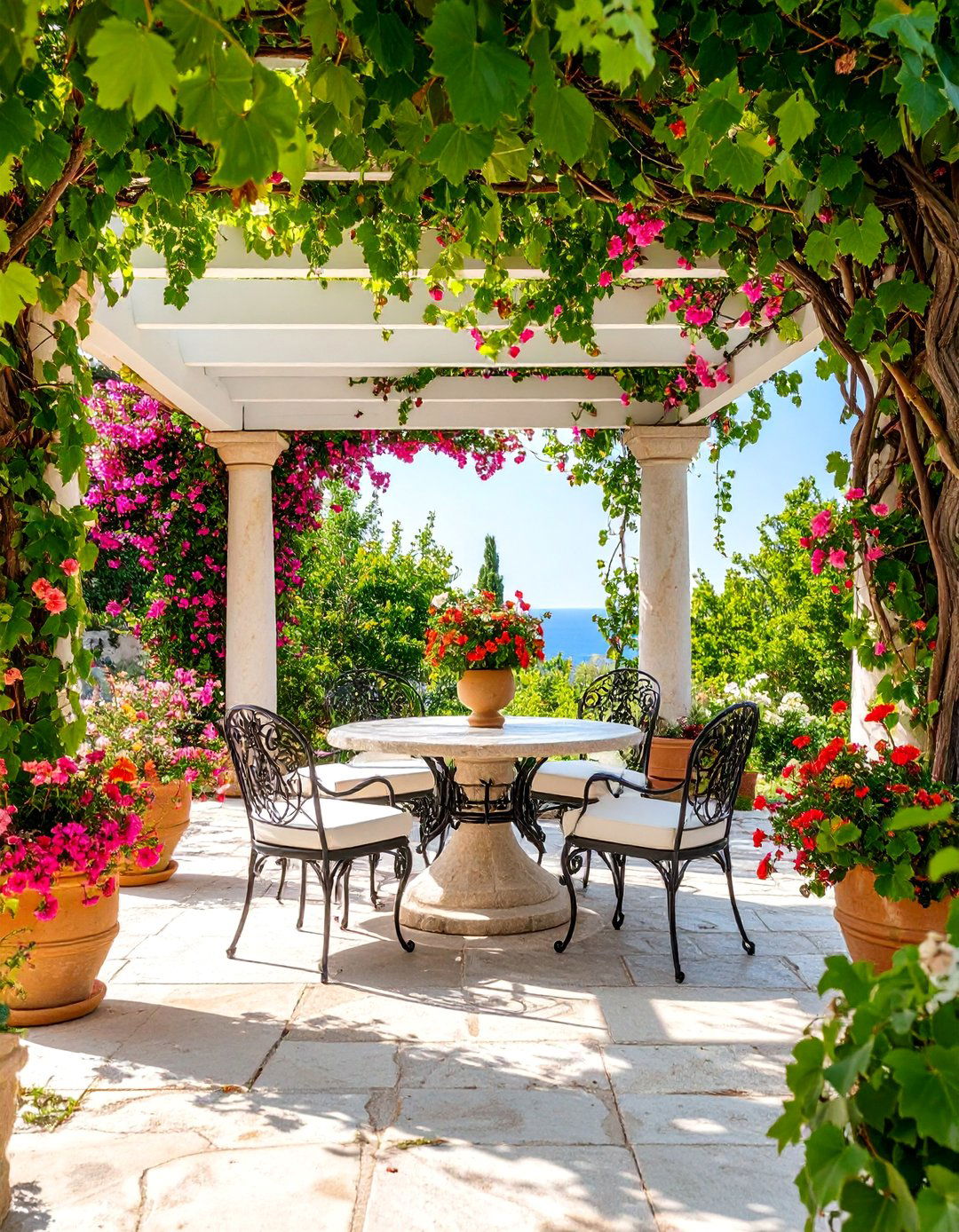

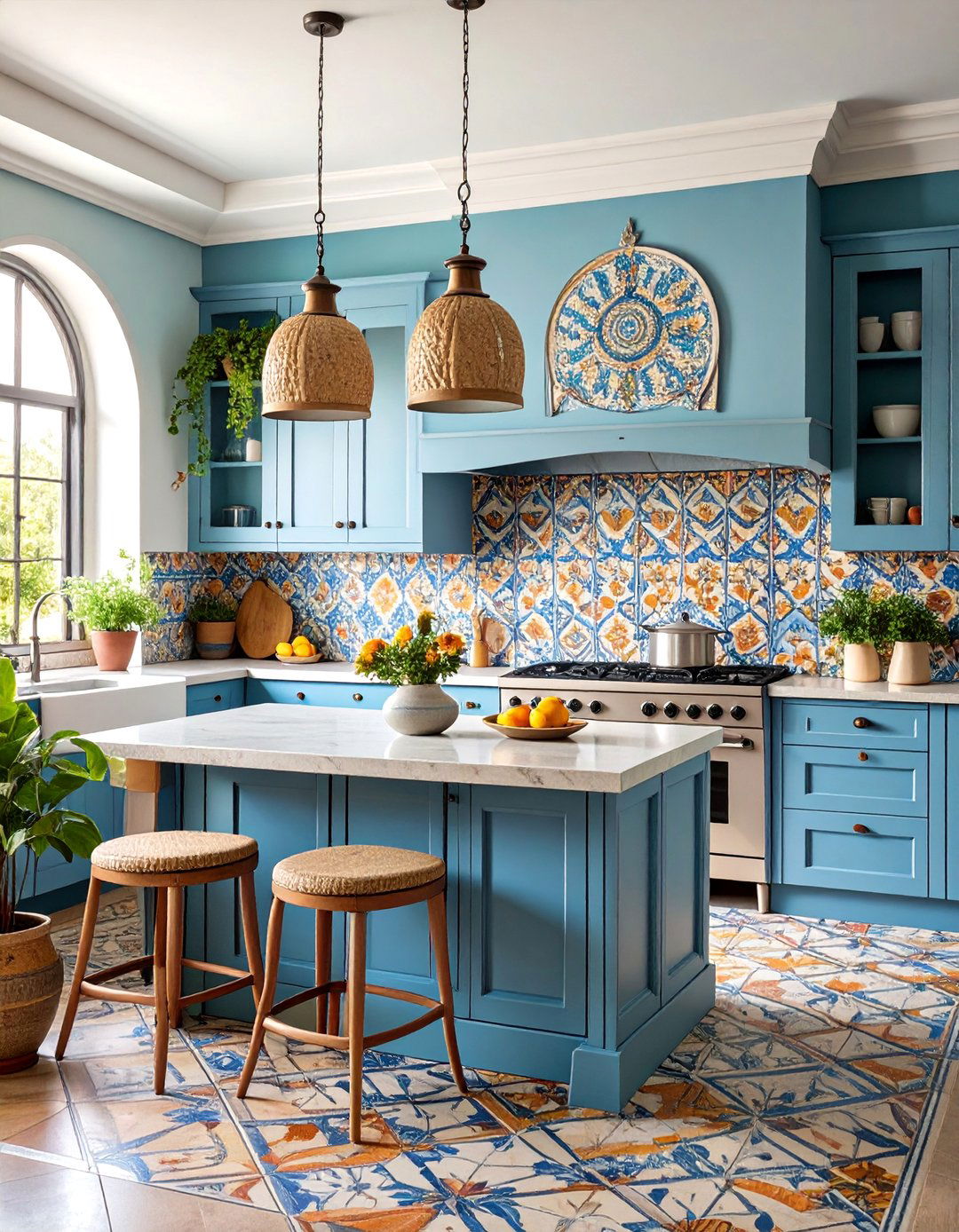

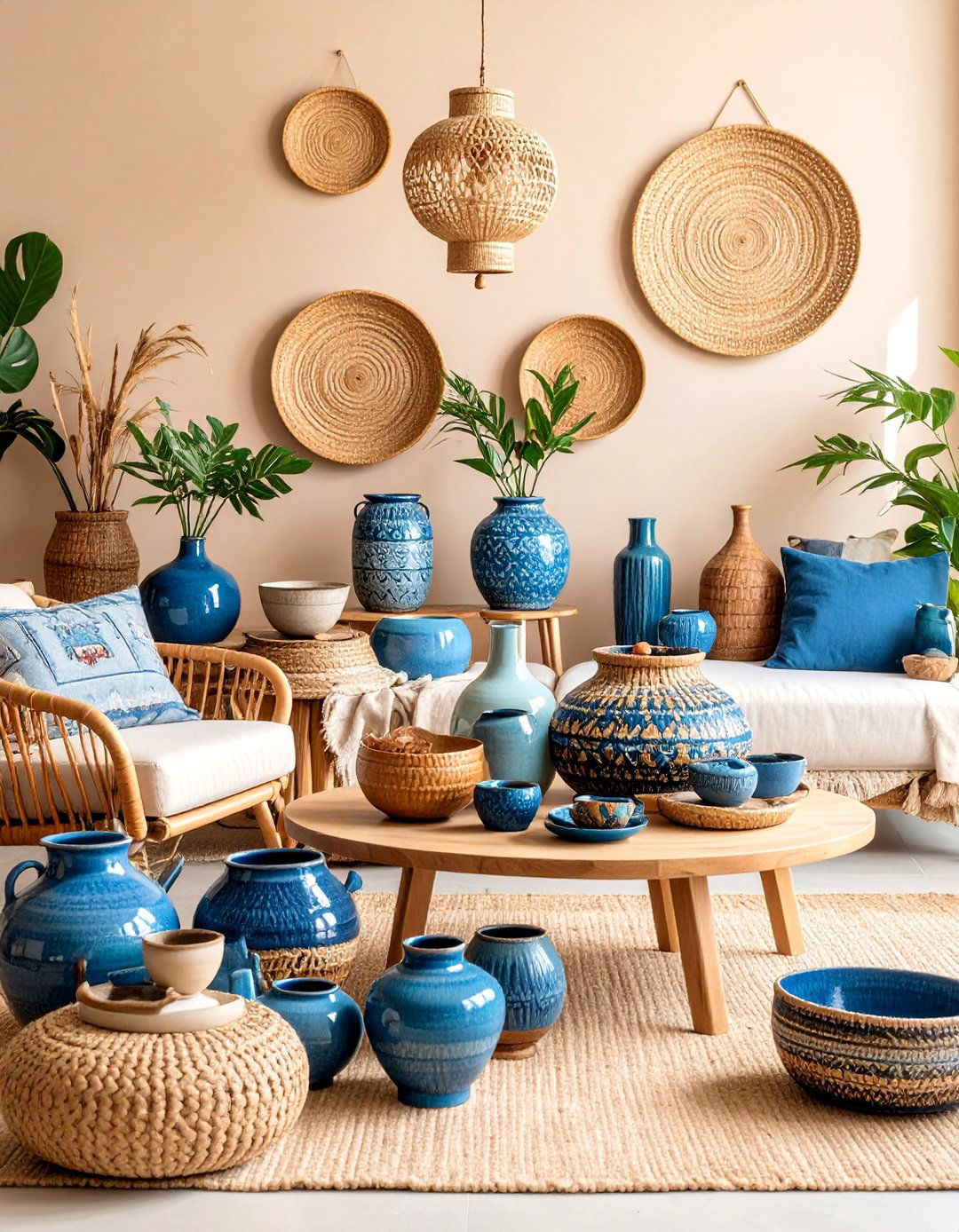
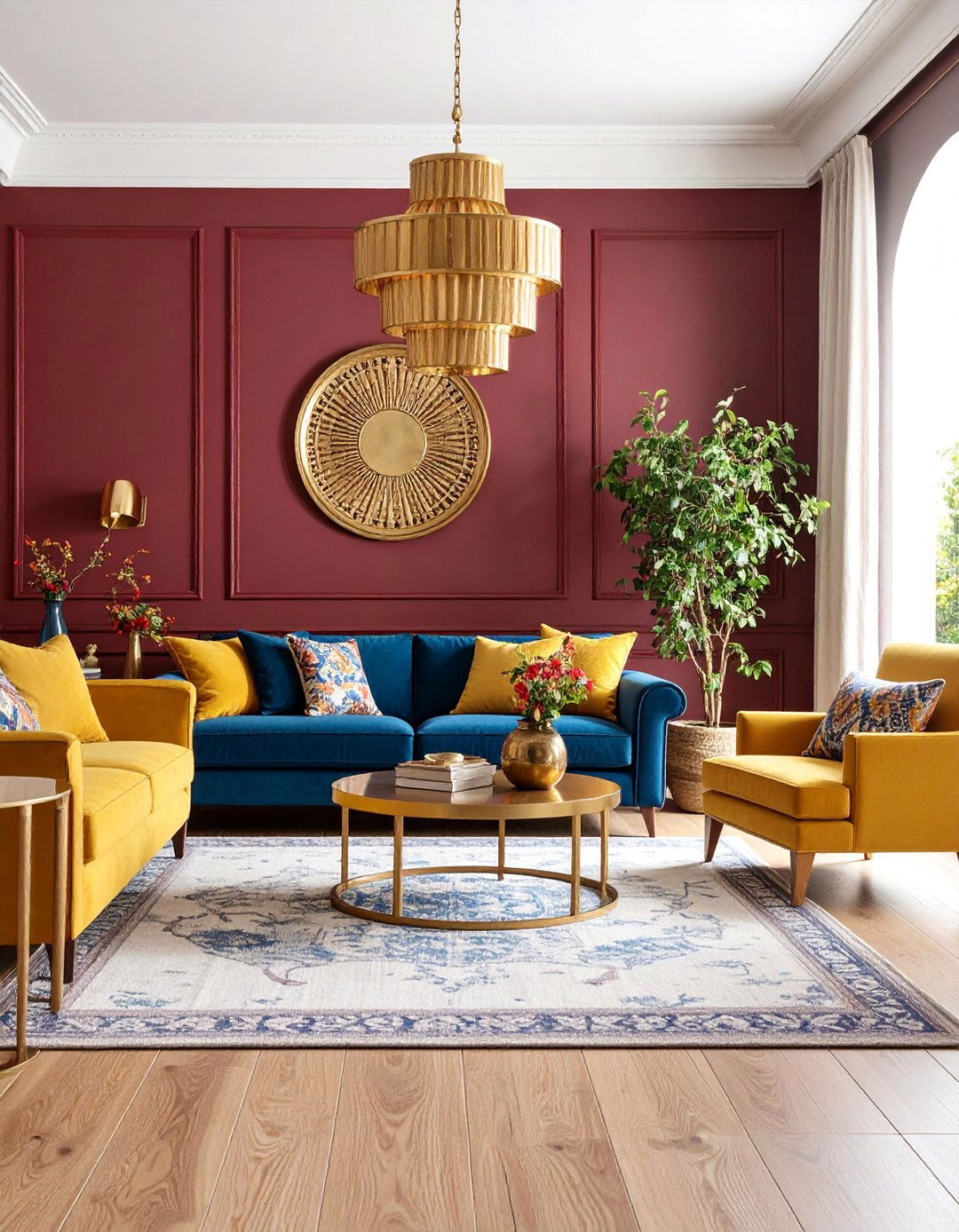
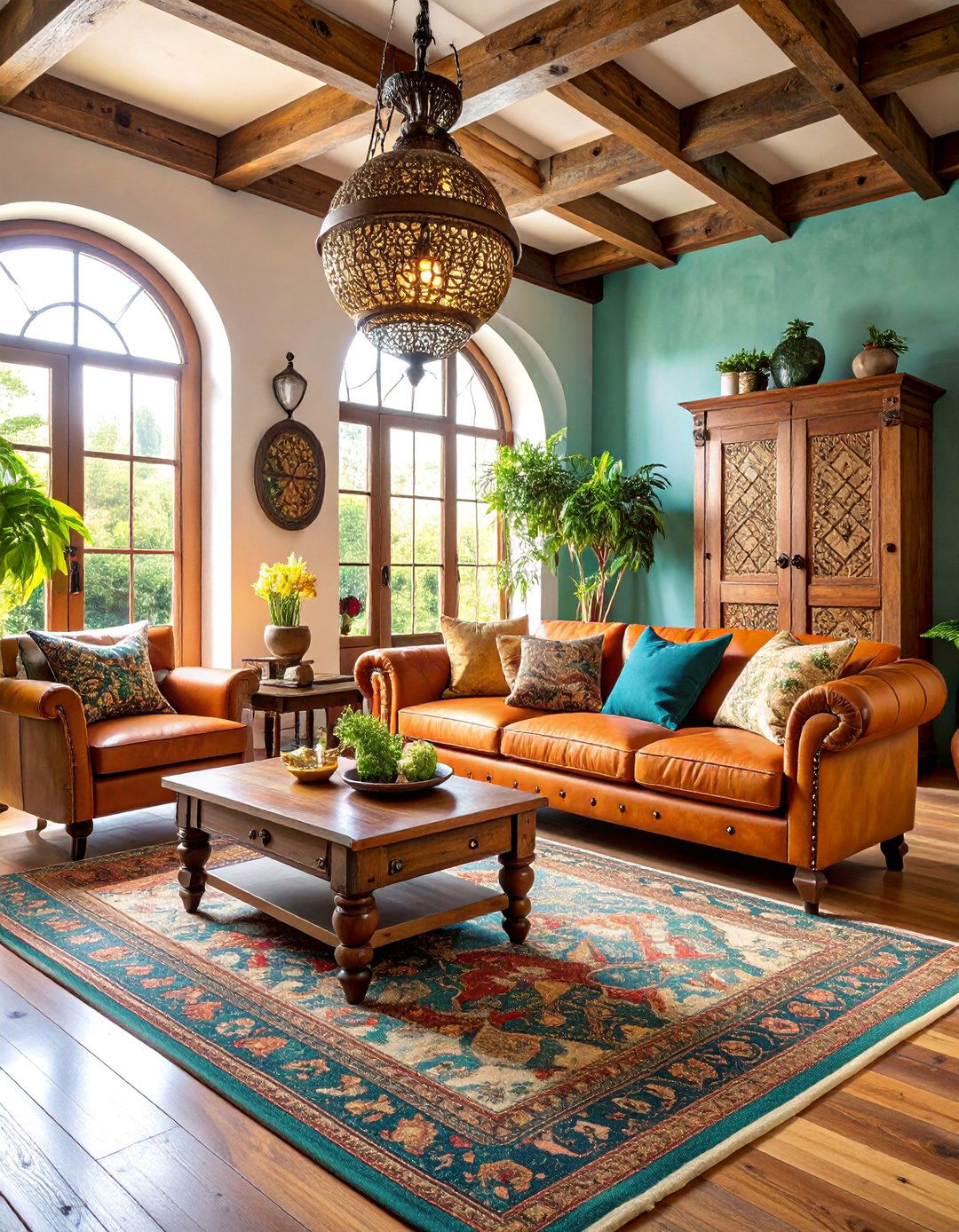
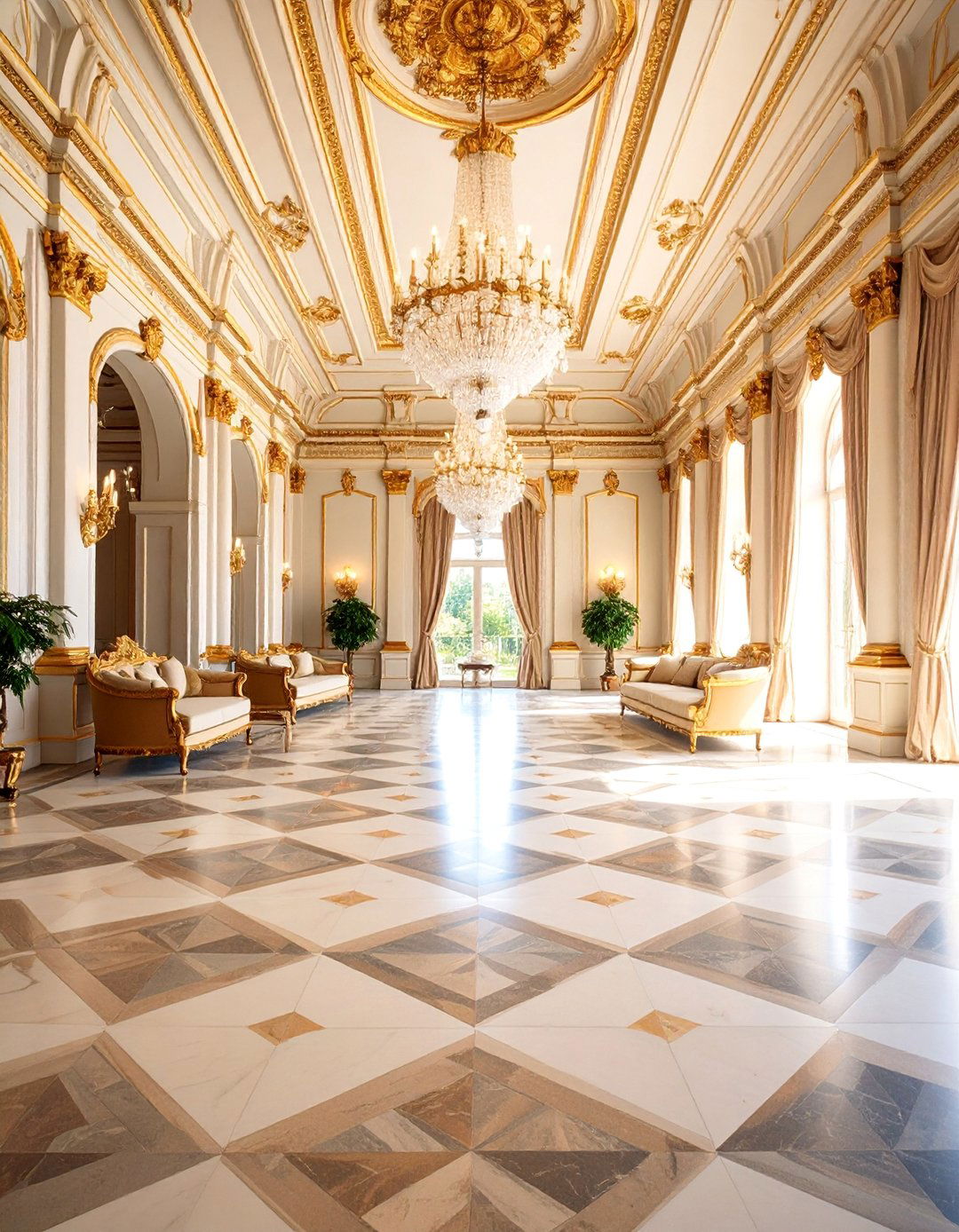
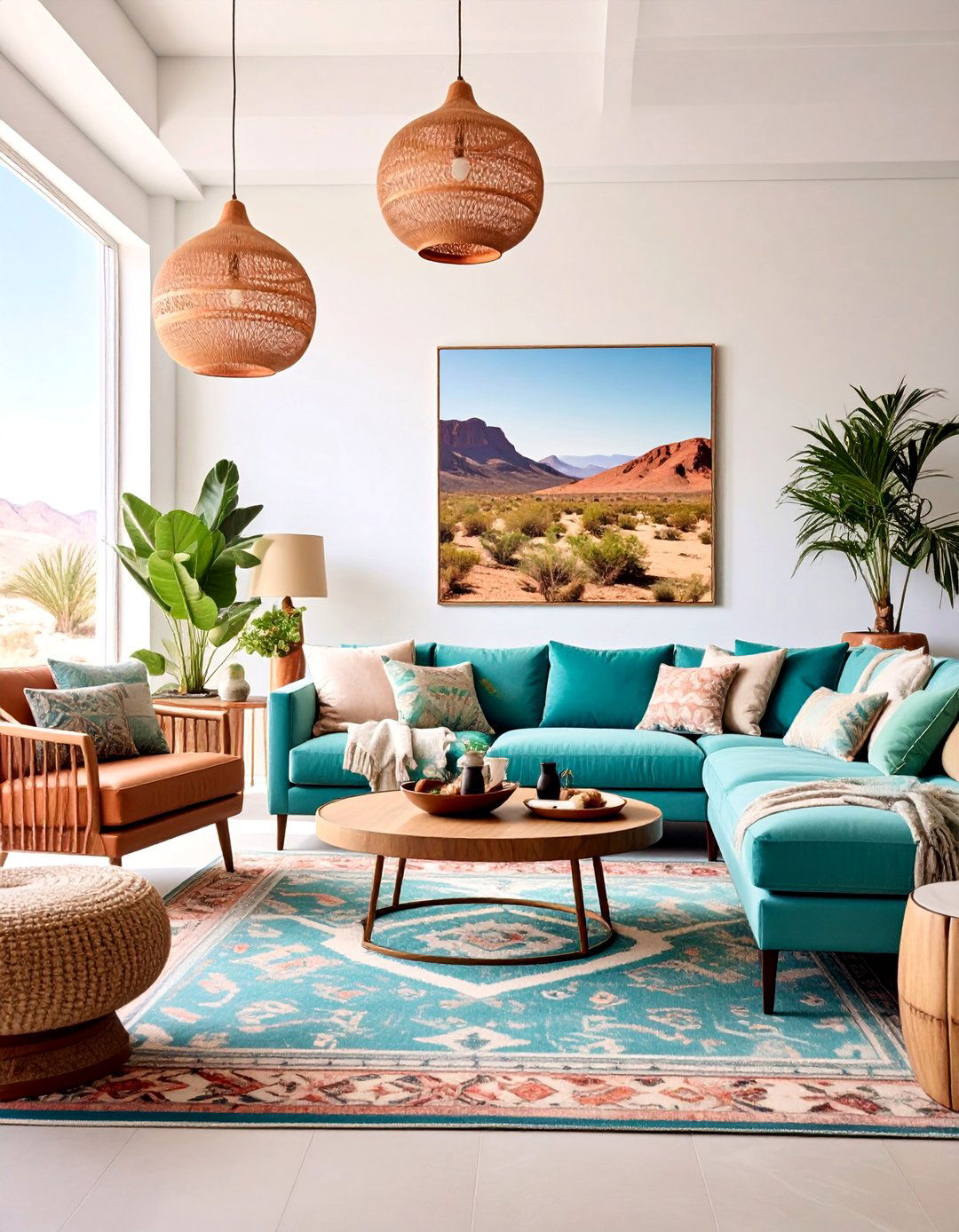
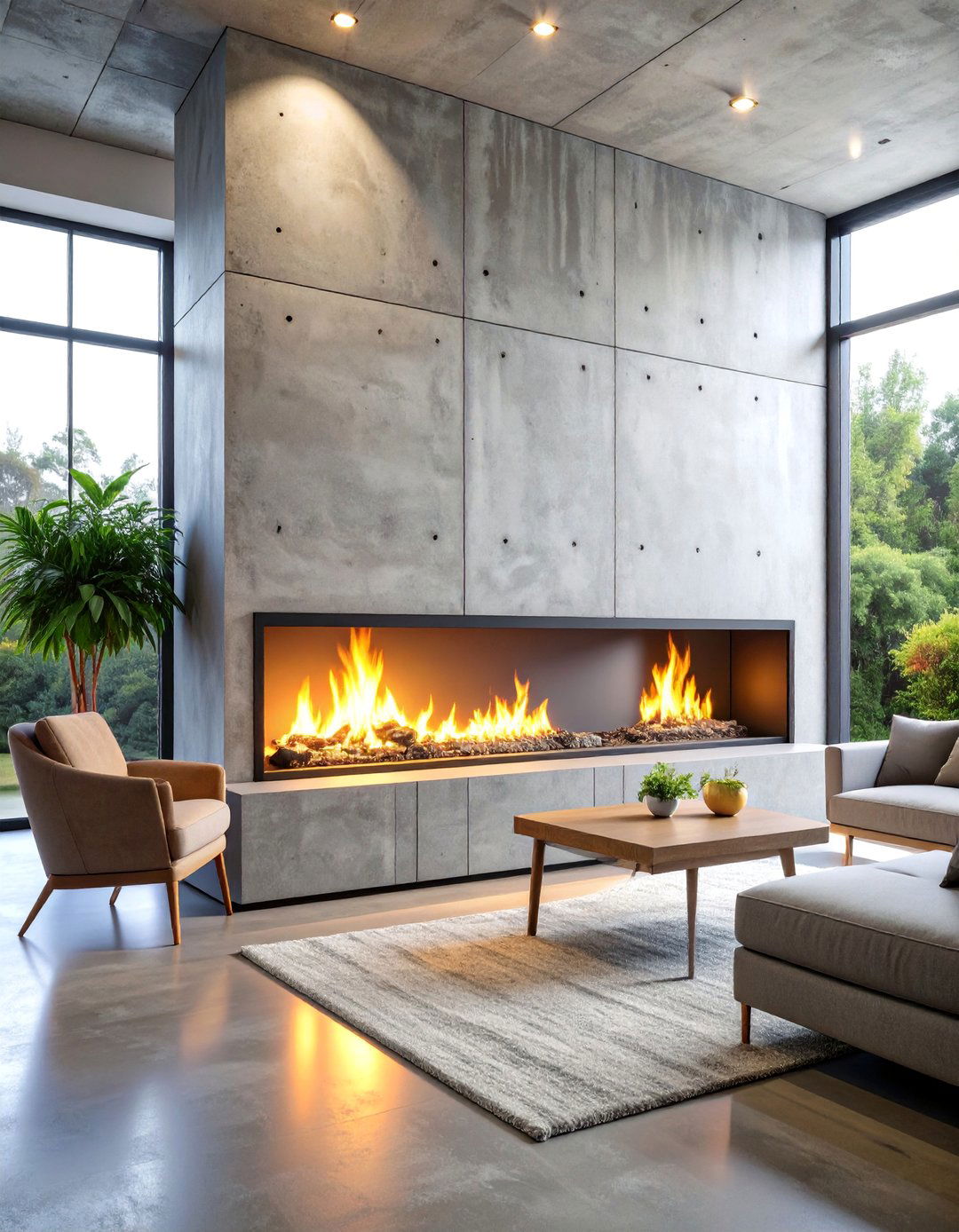
Leave a Reply